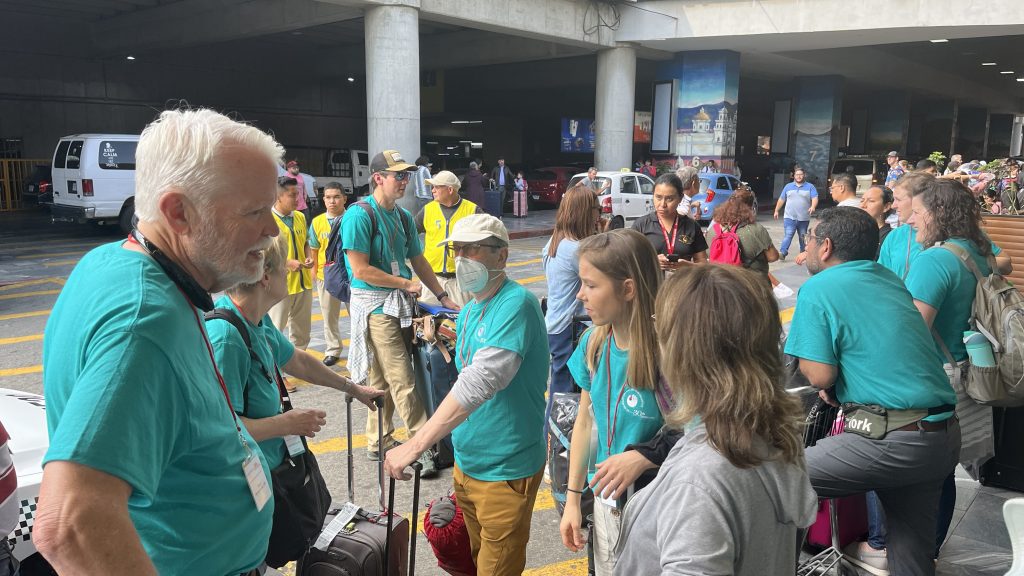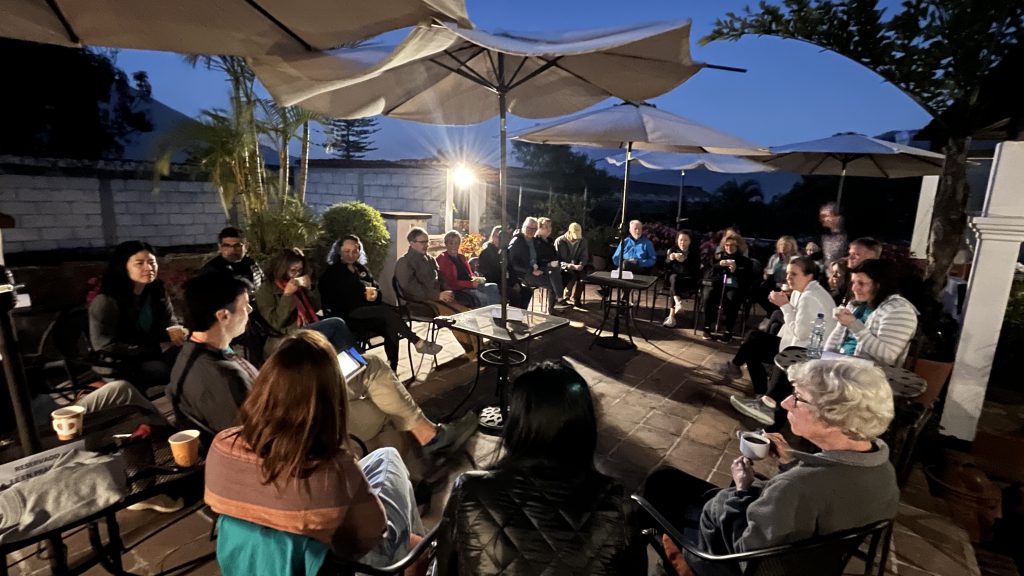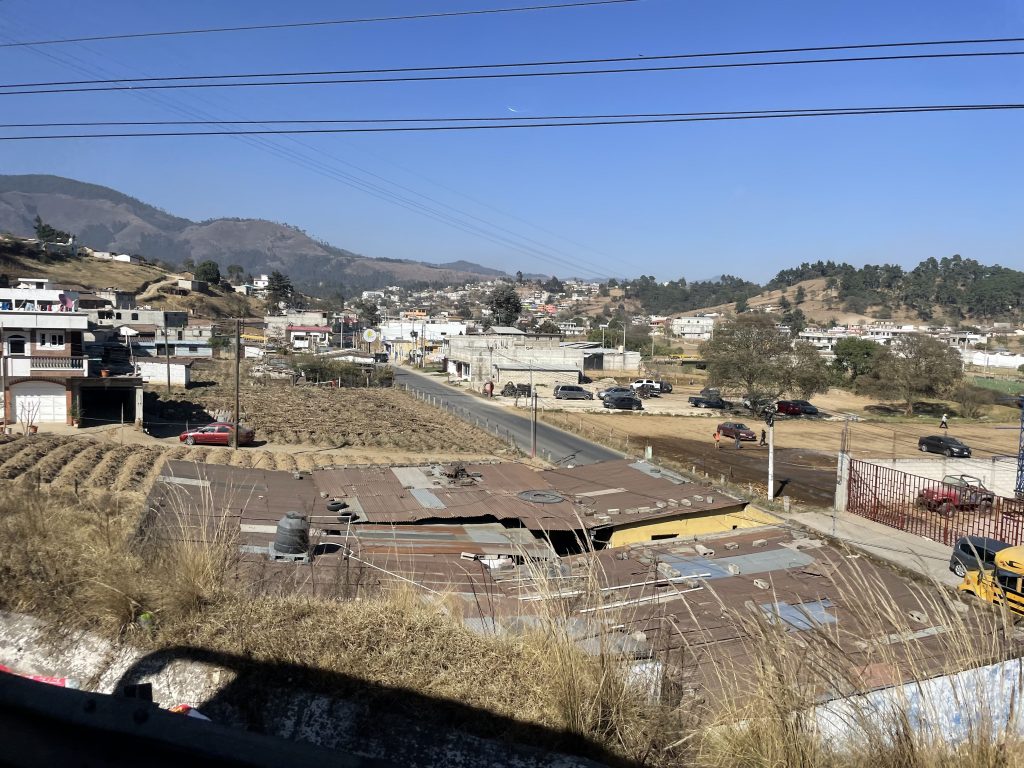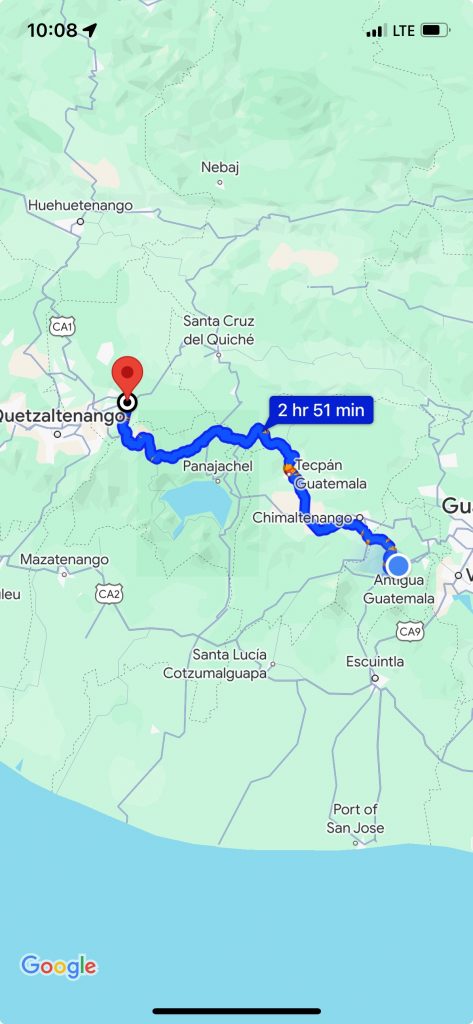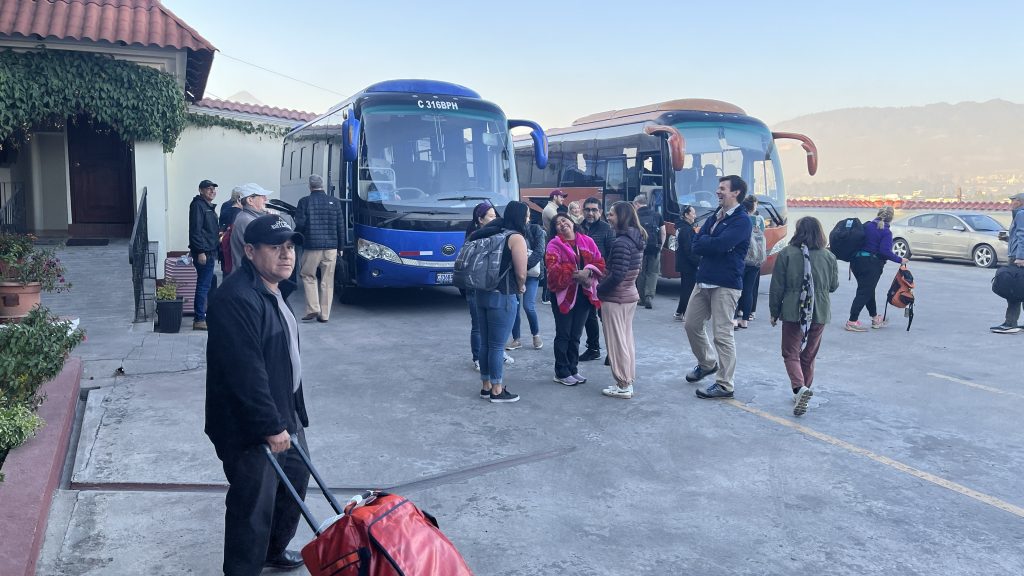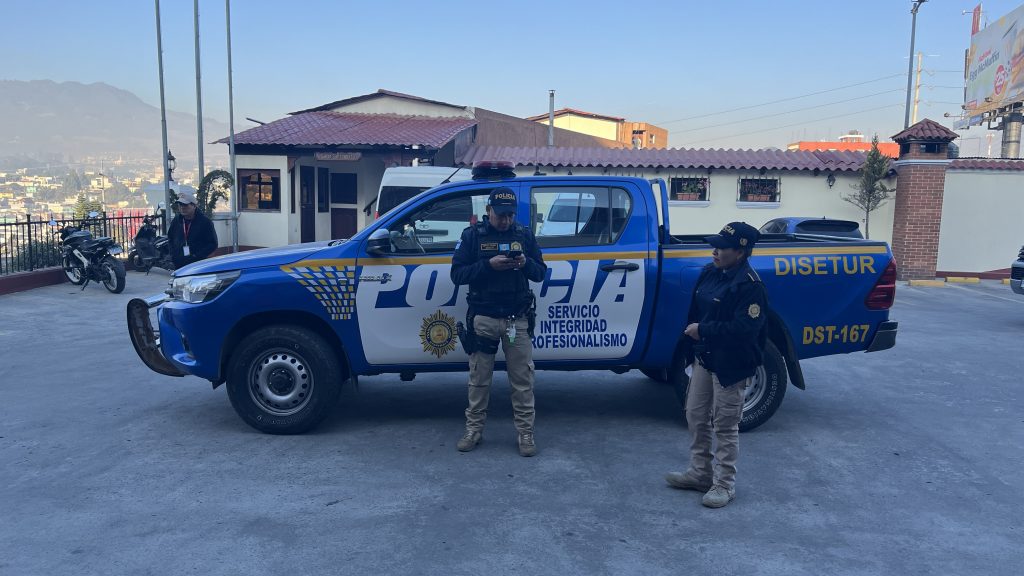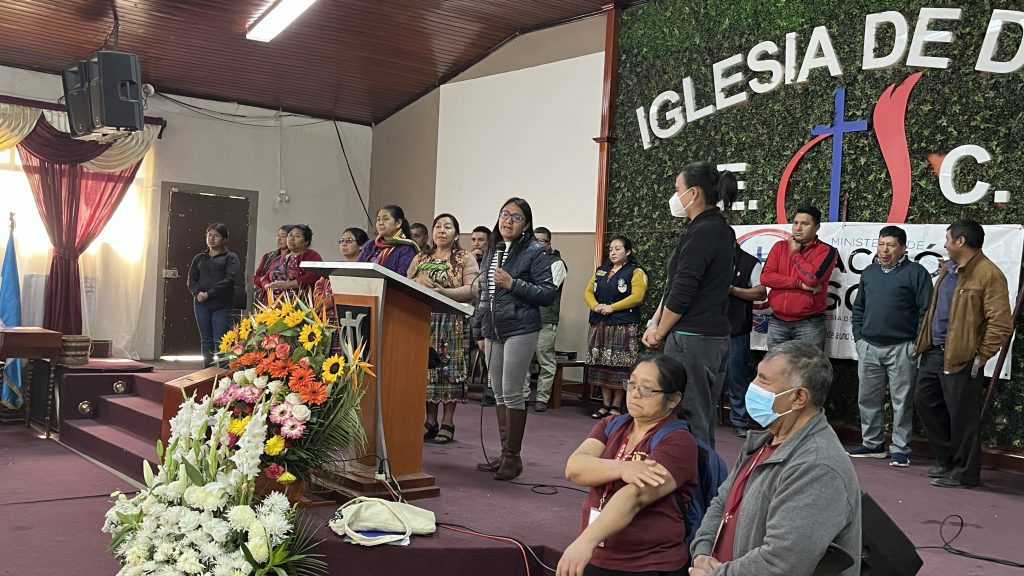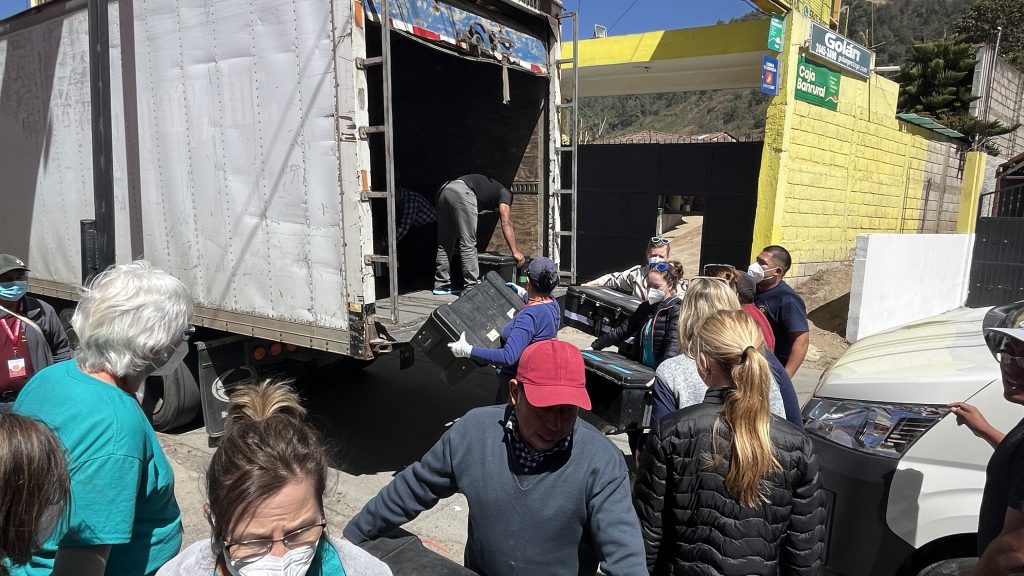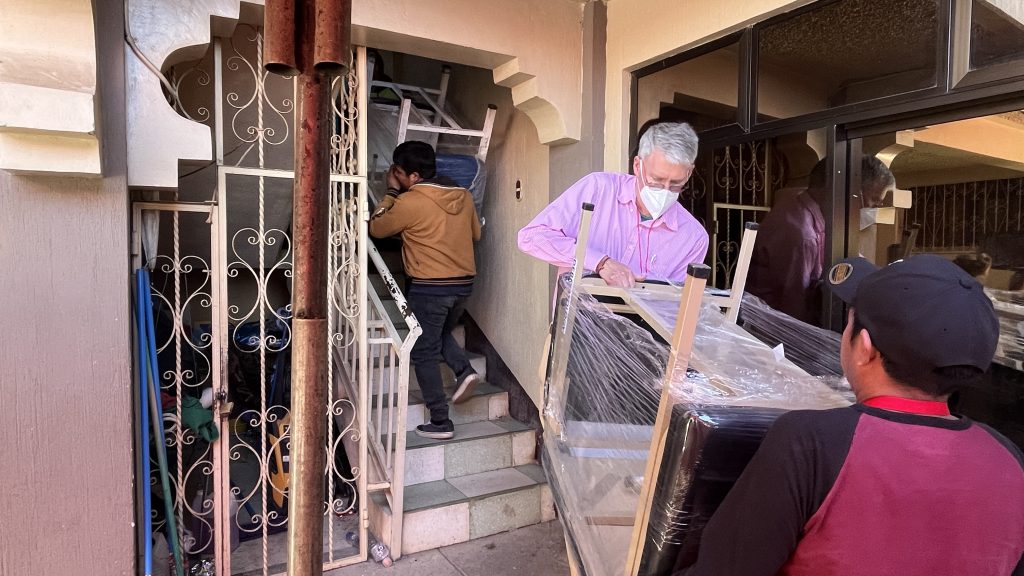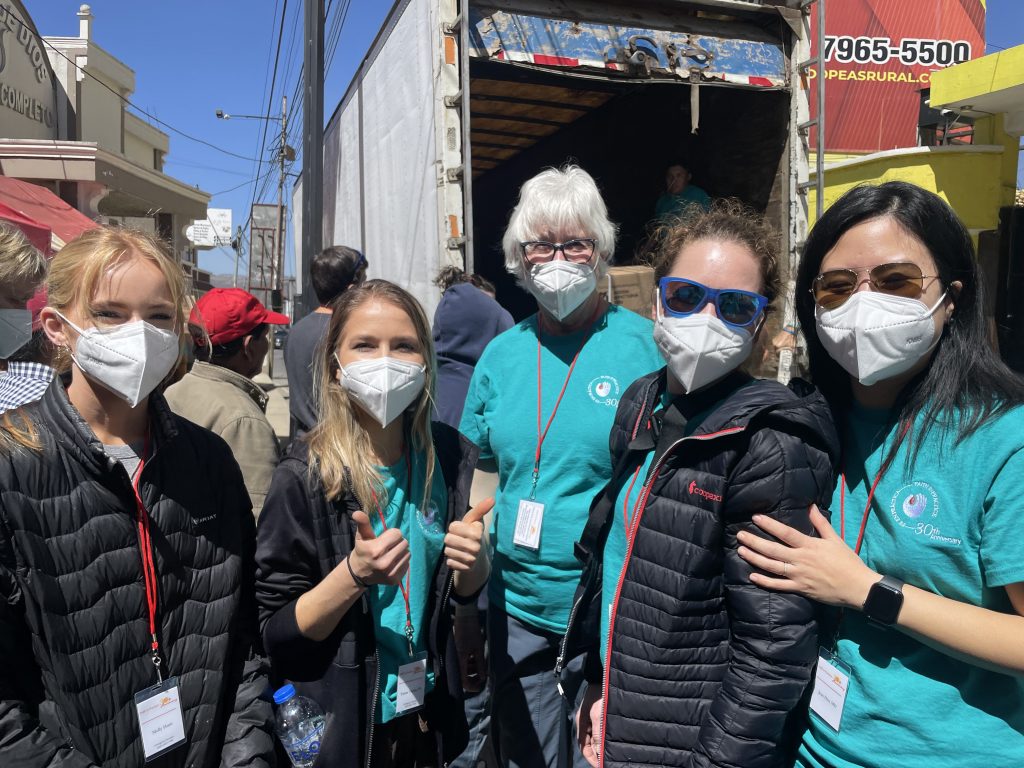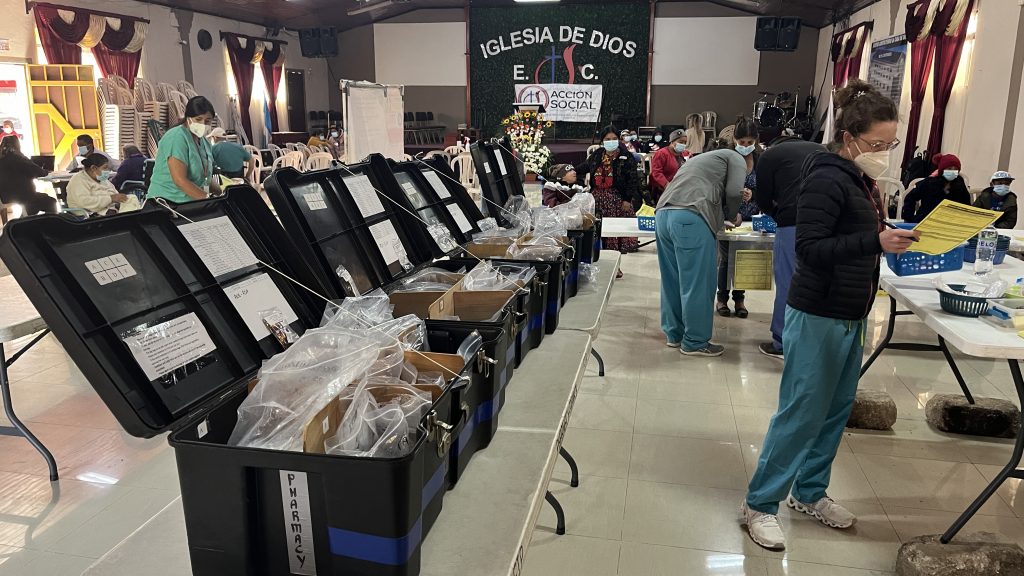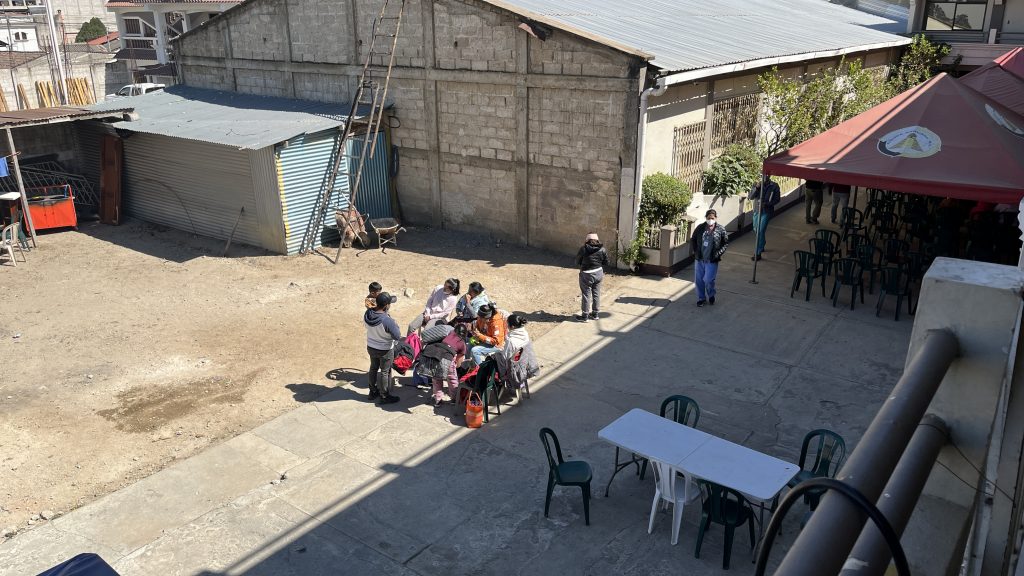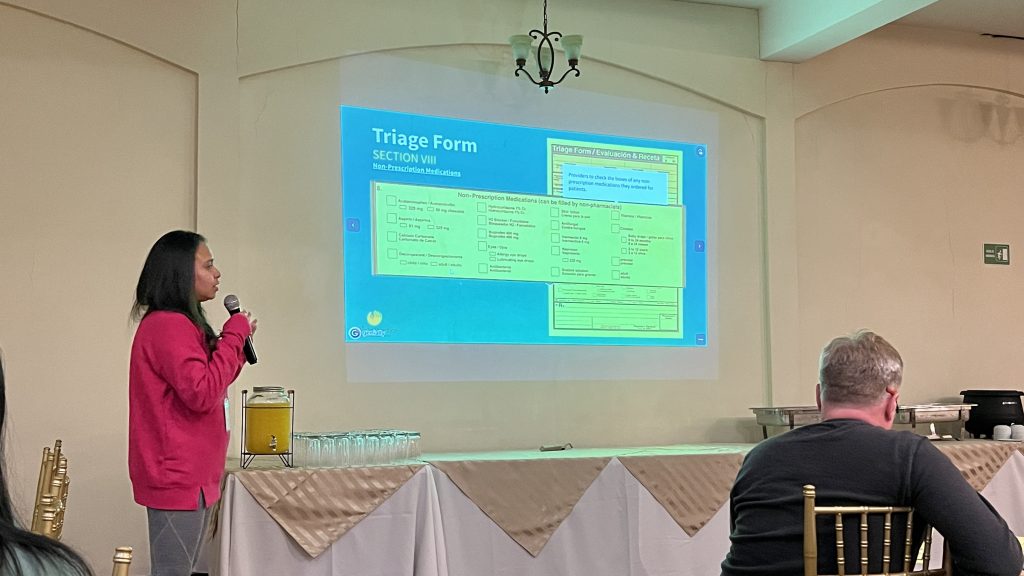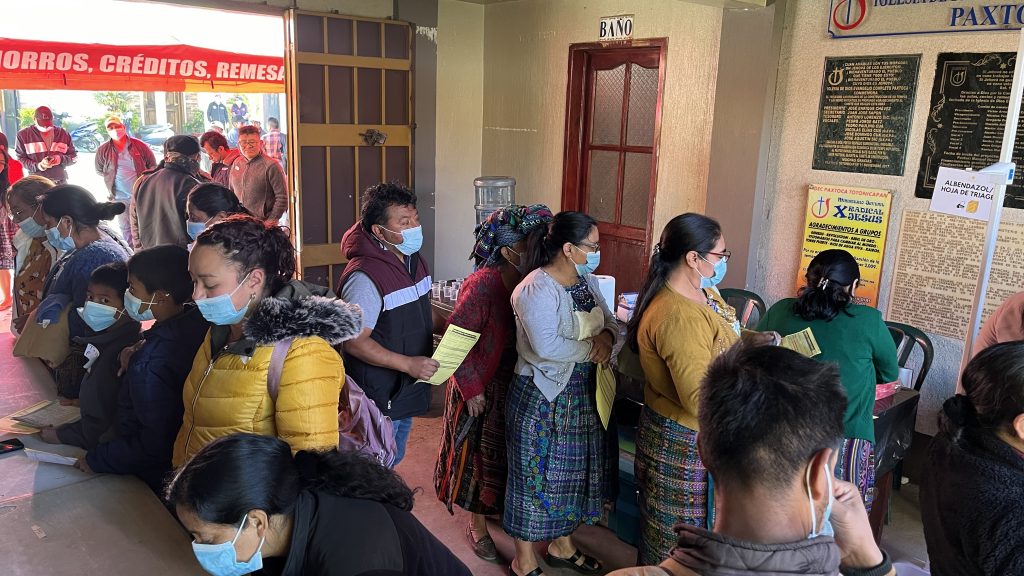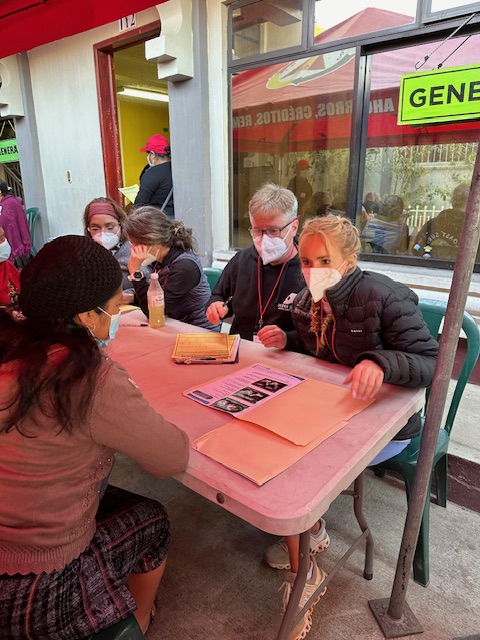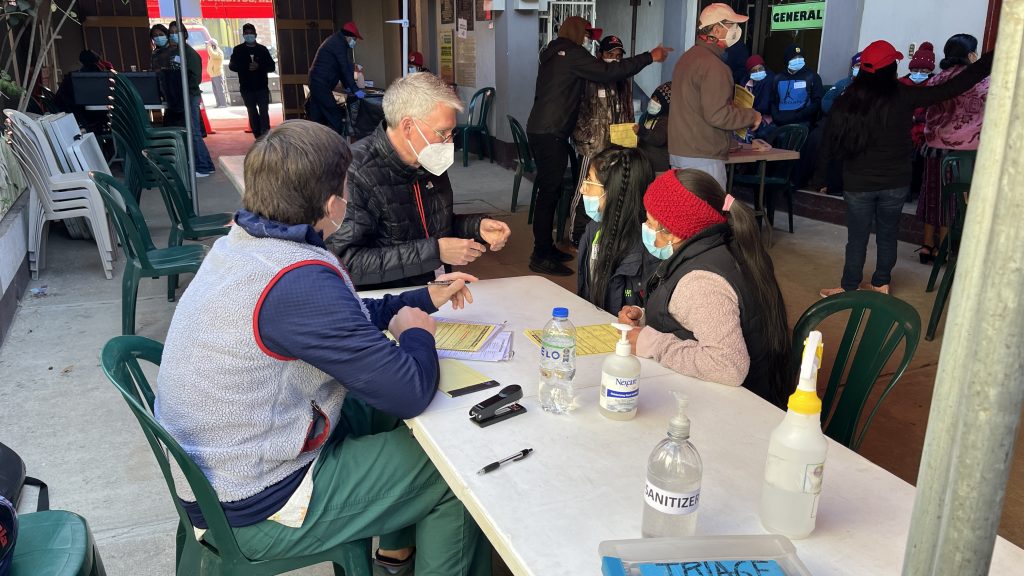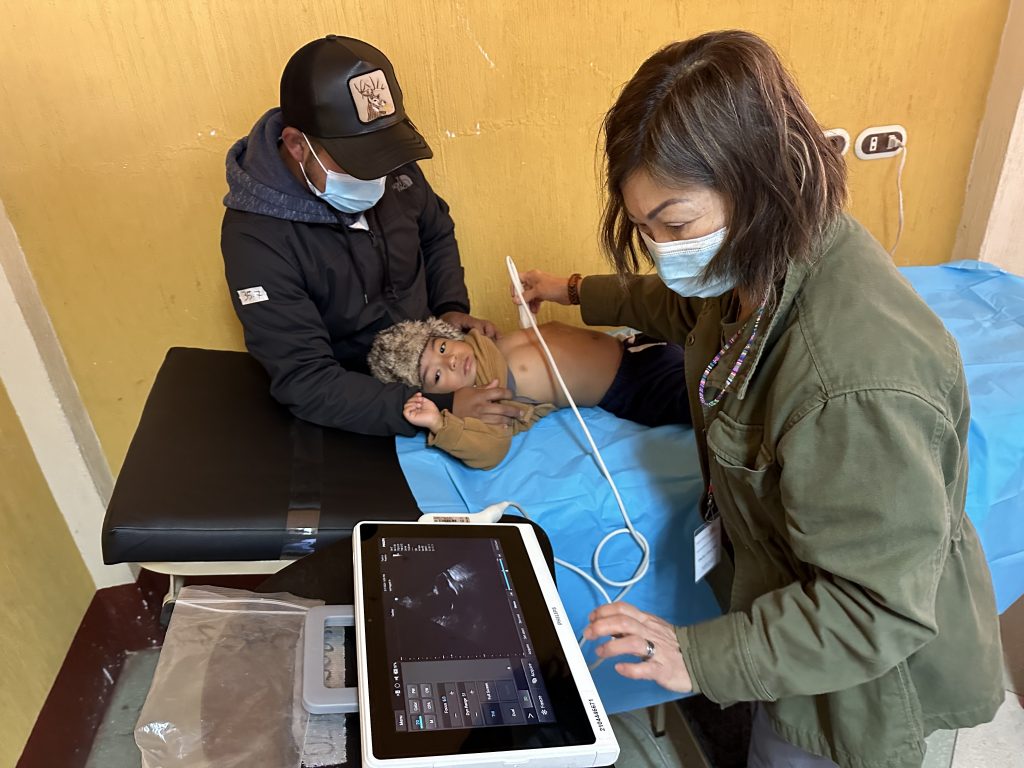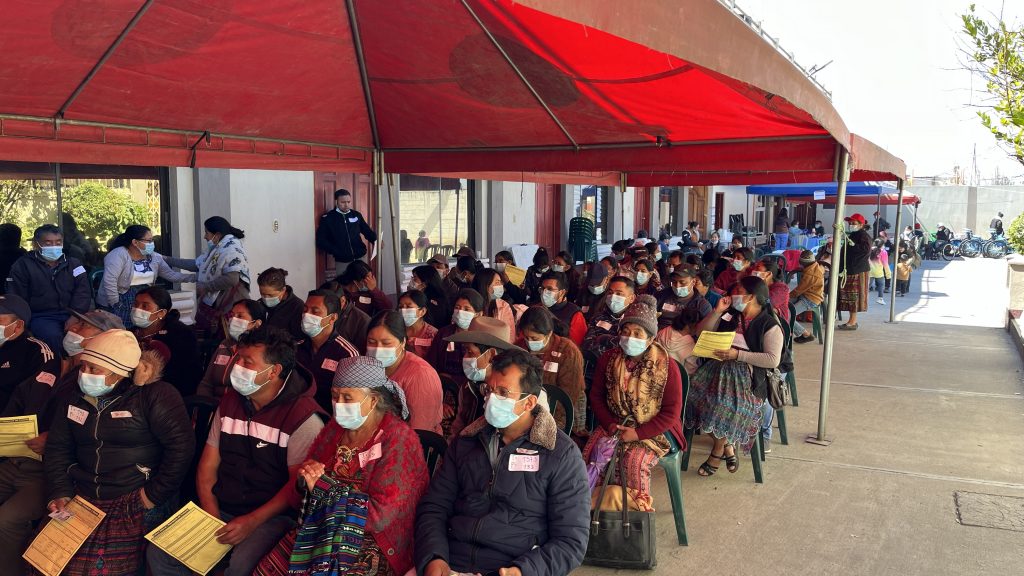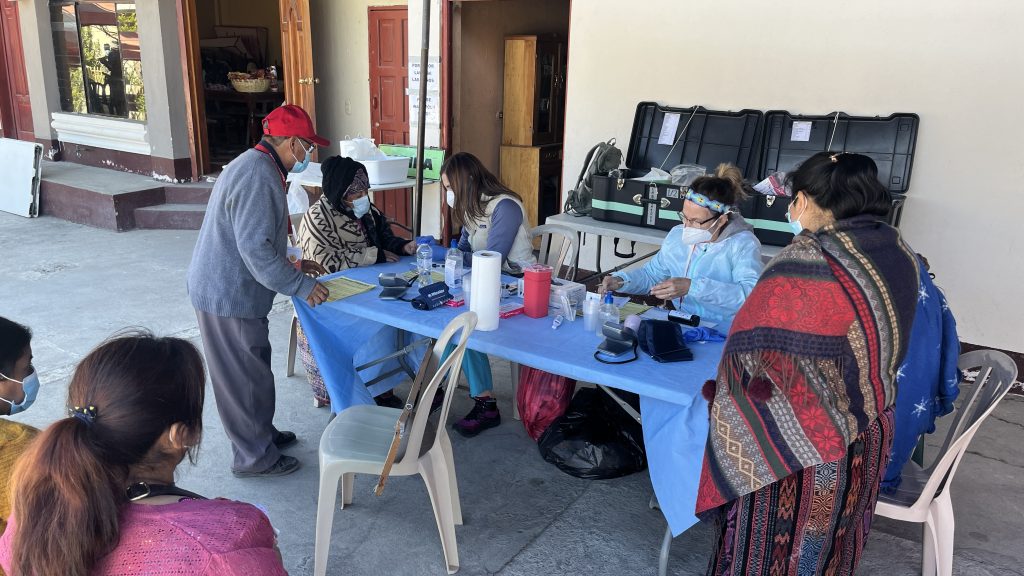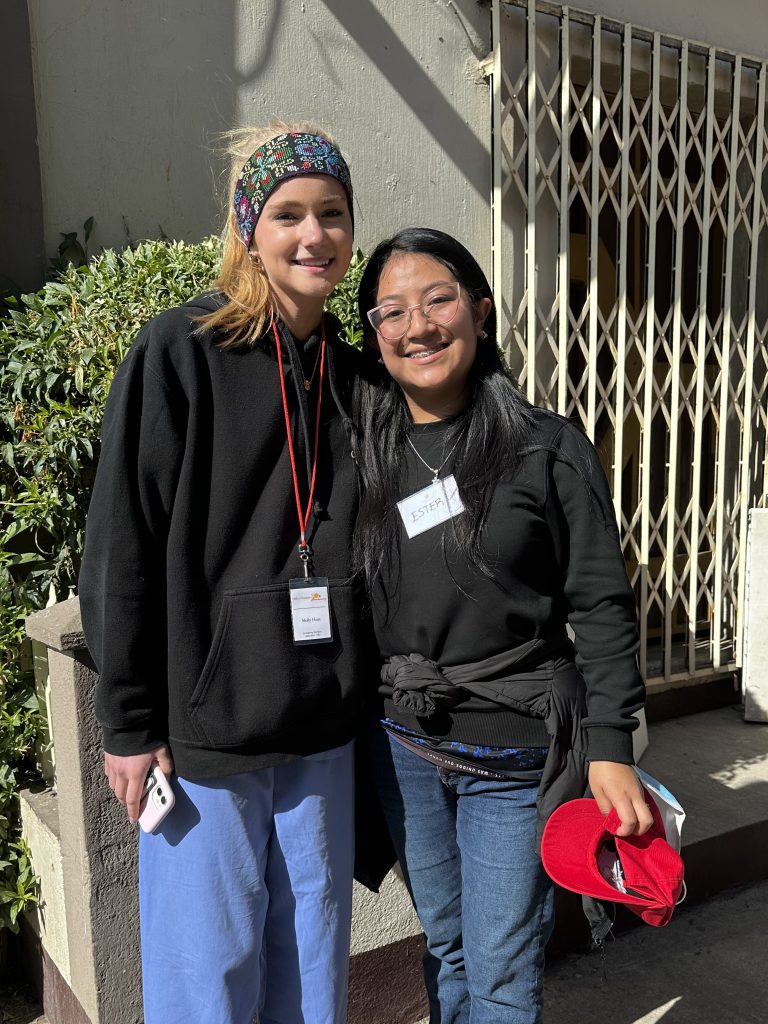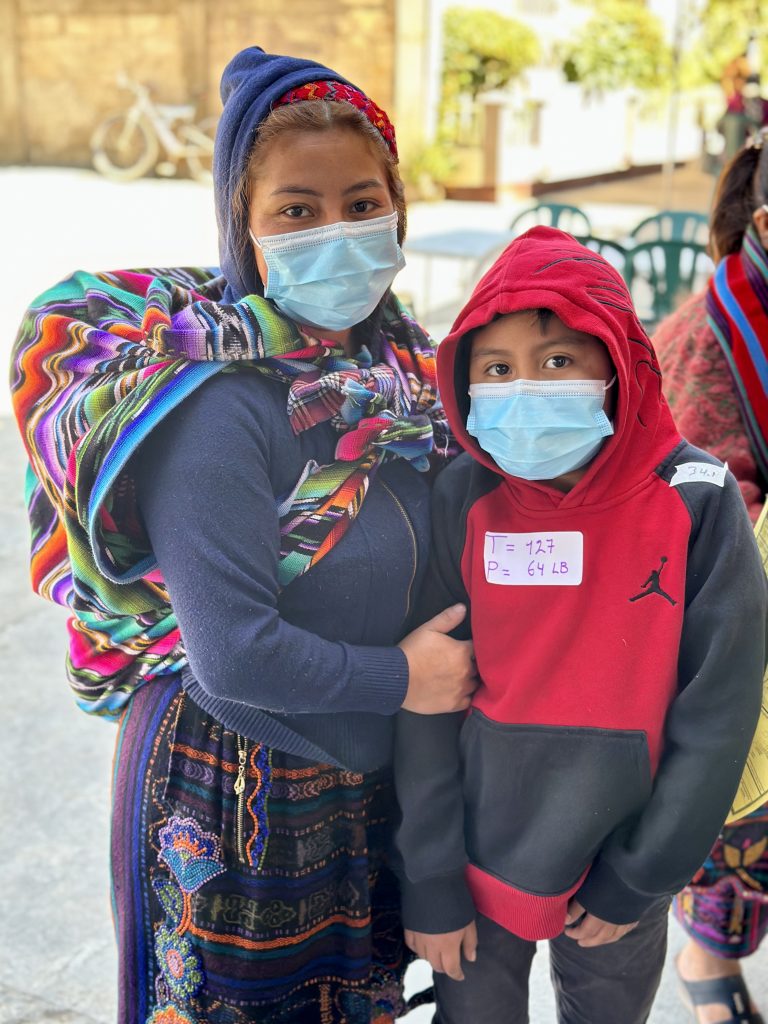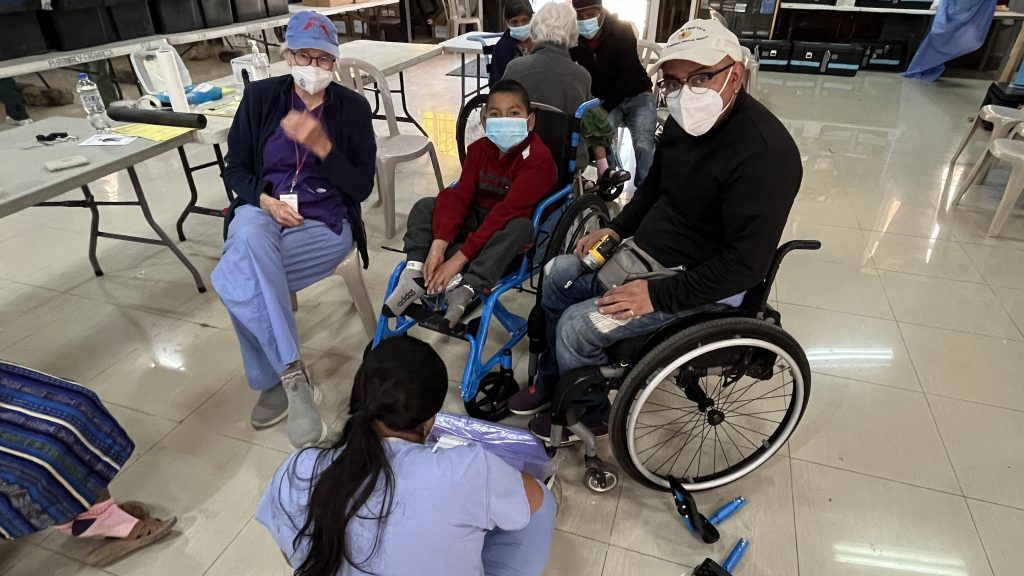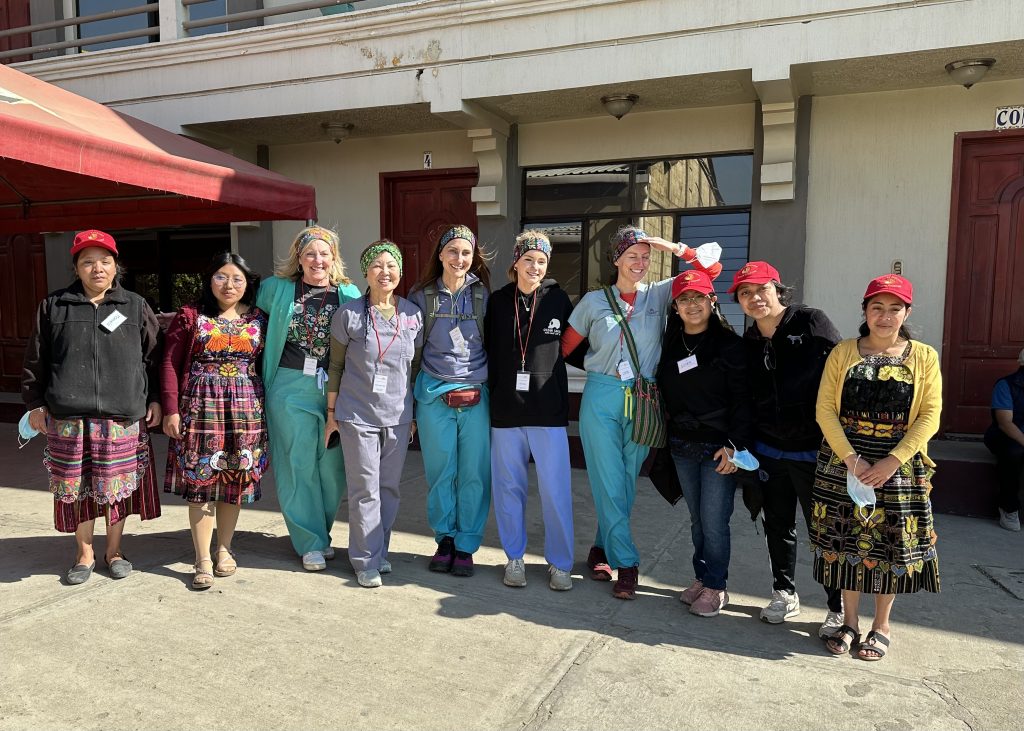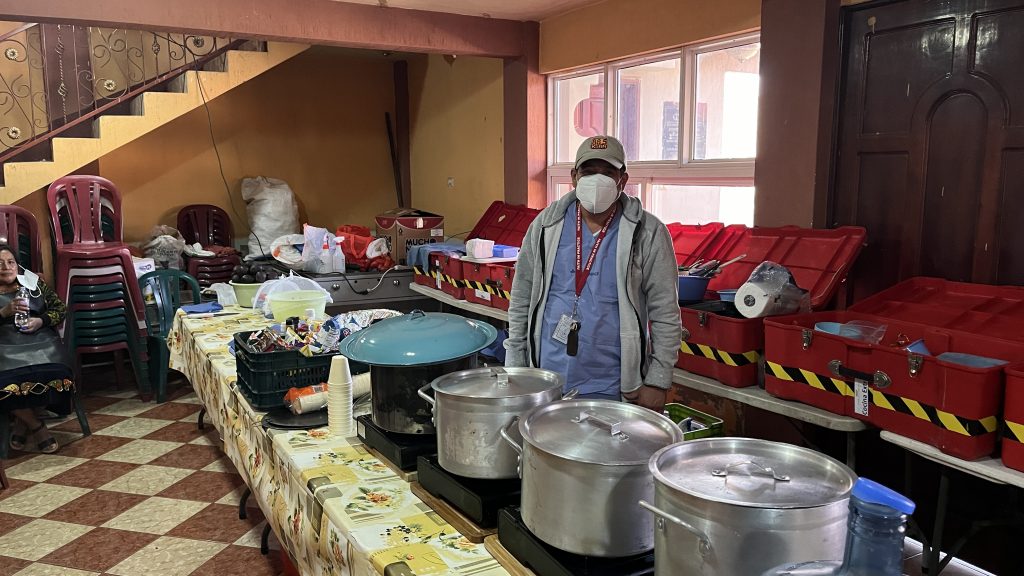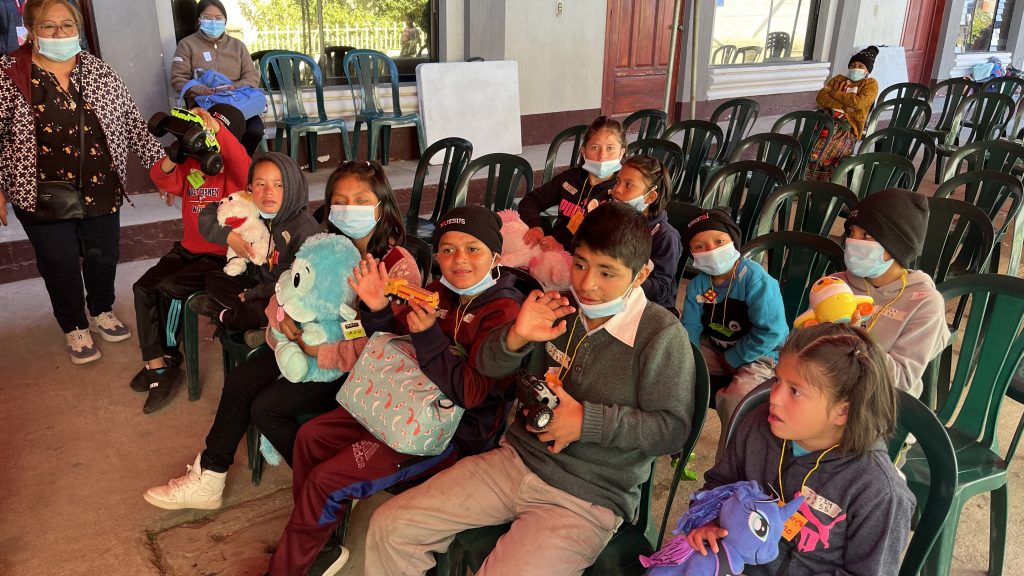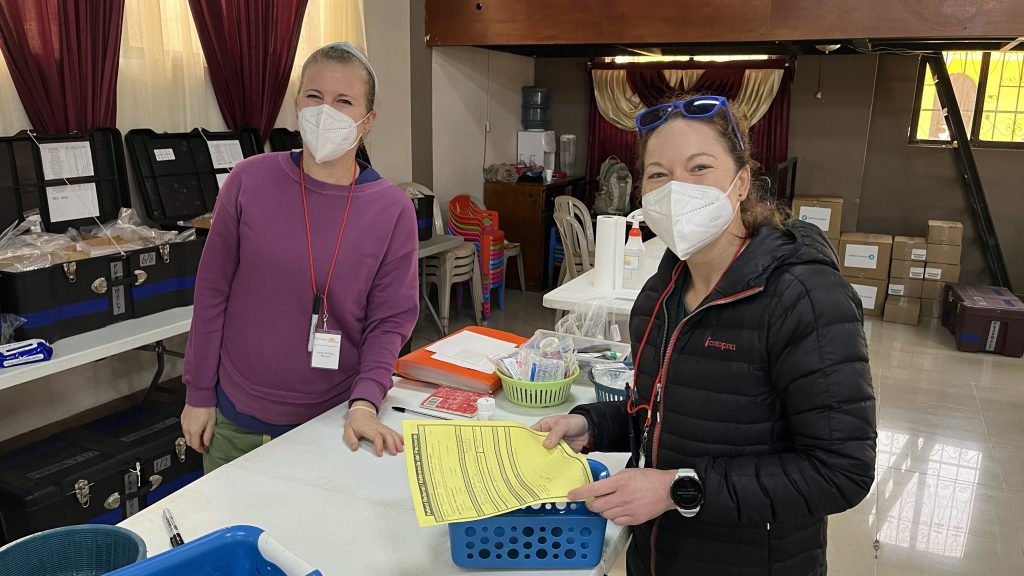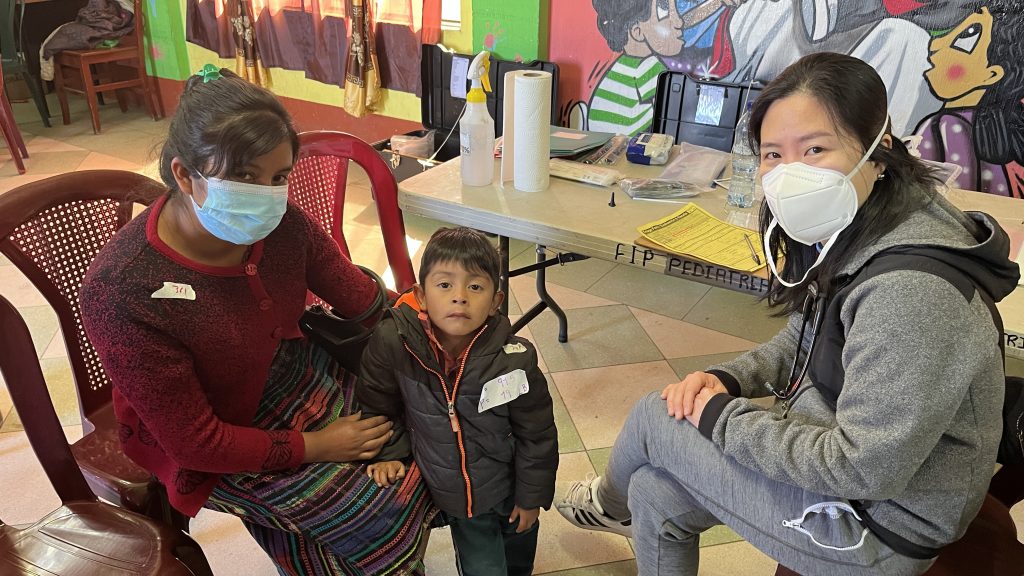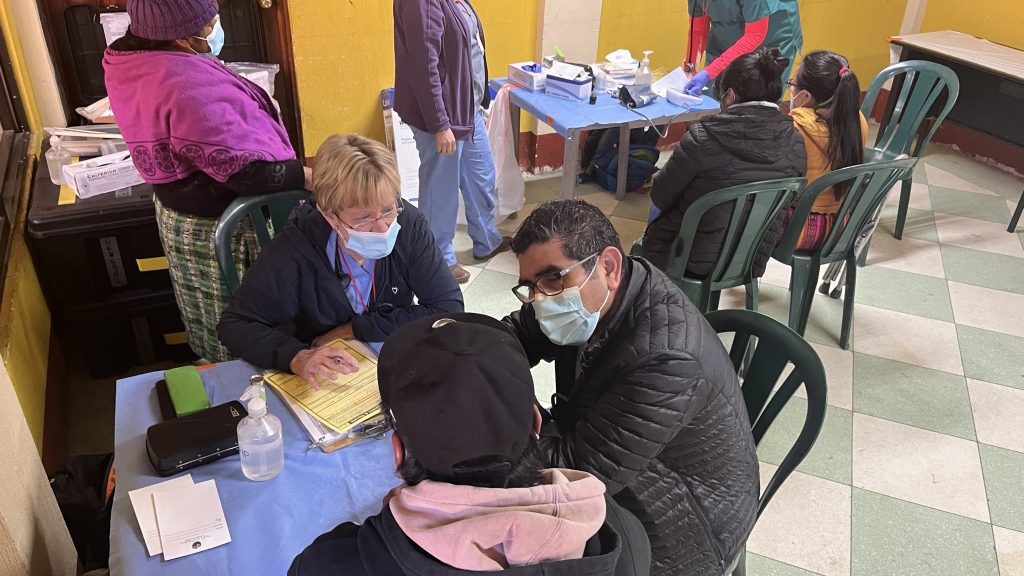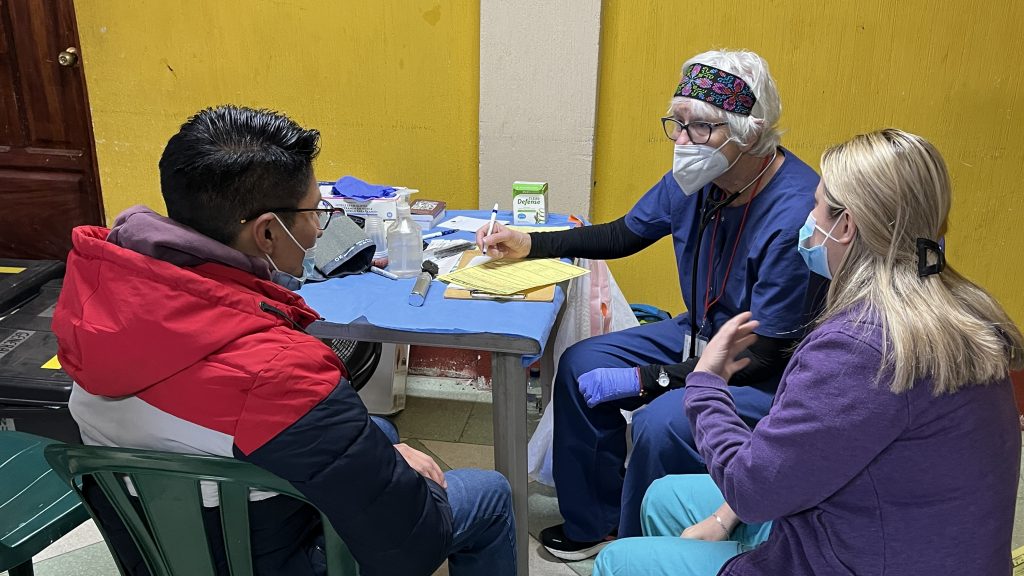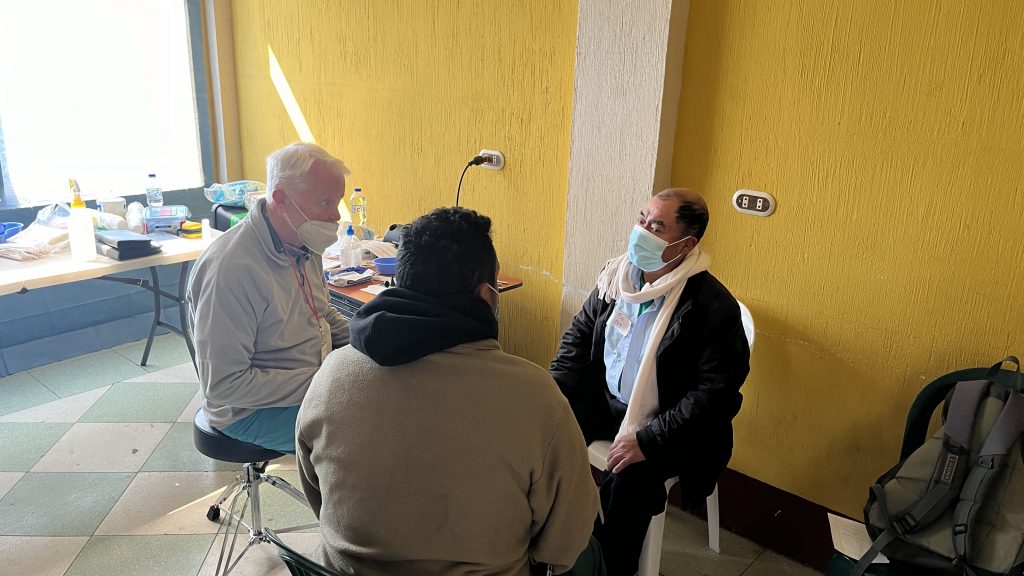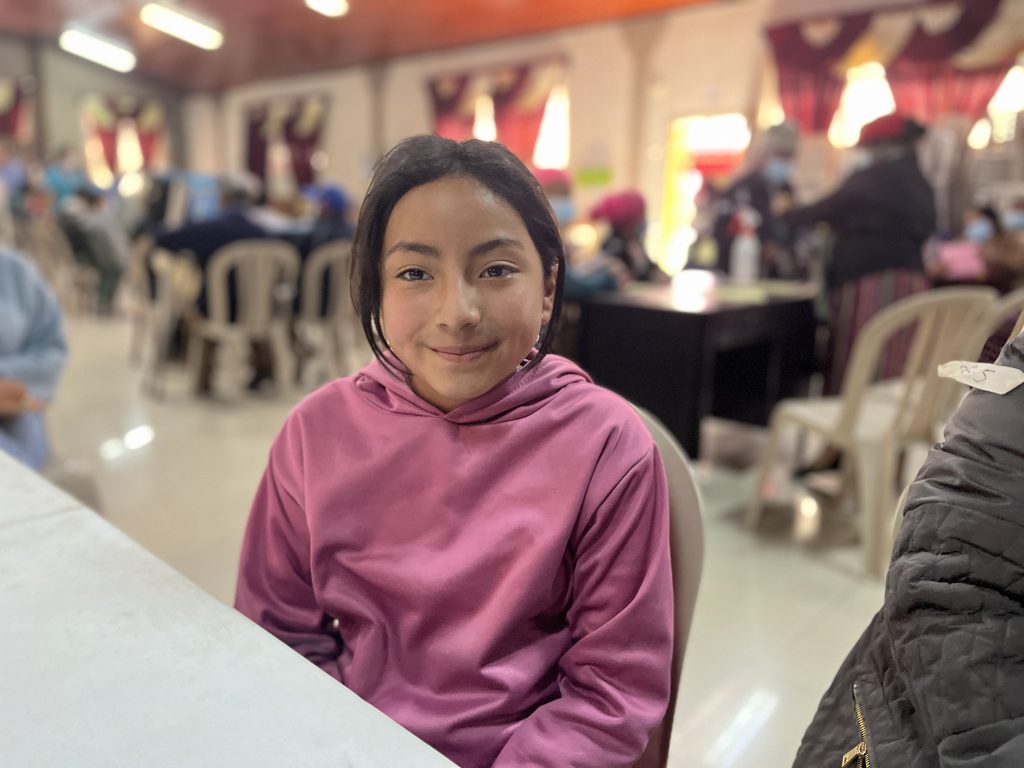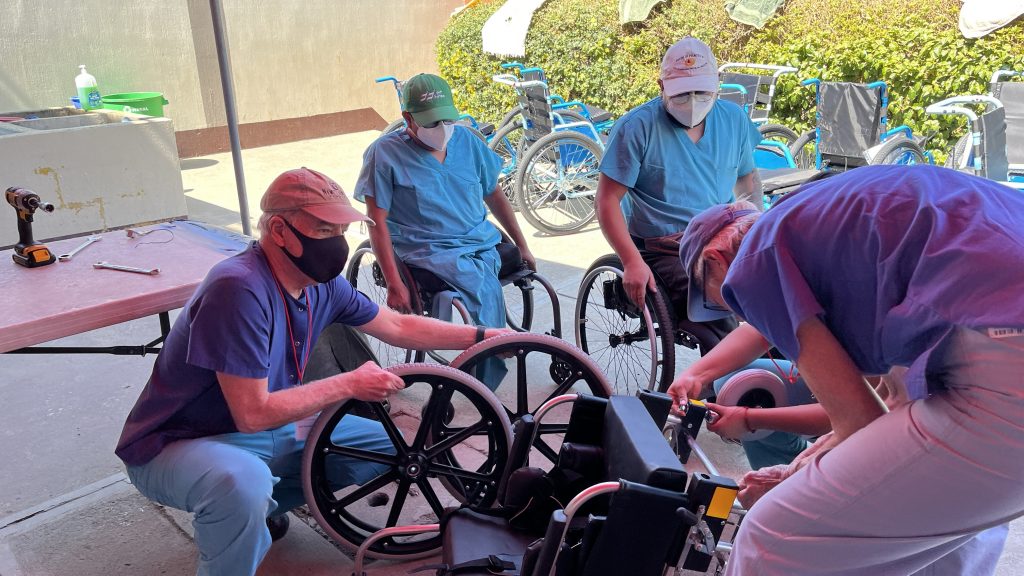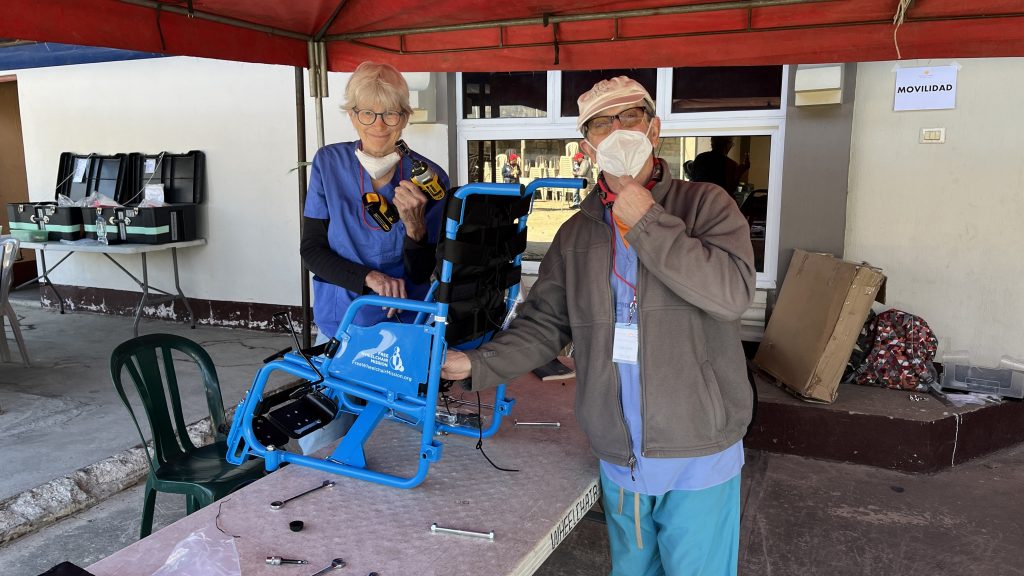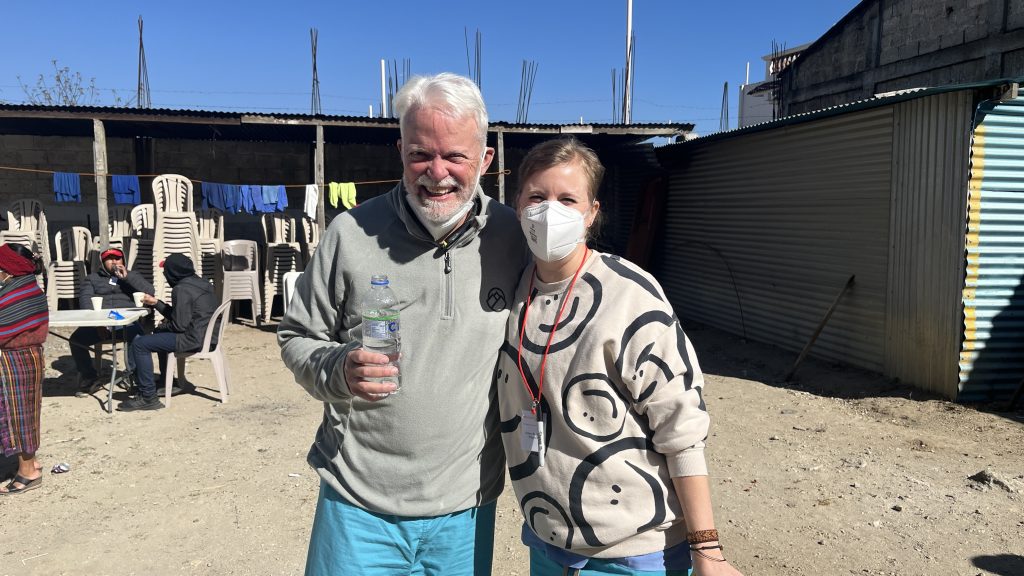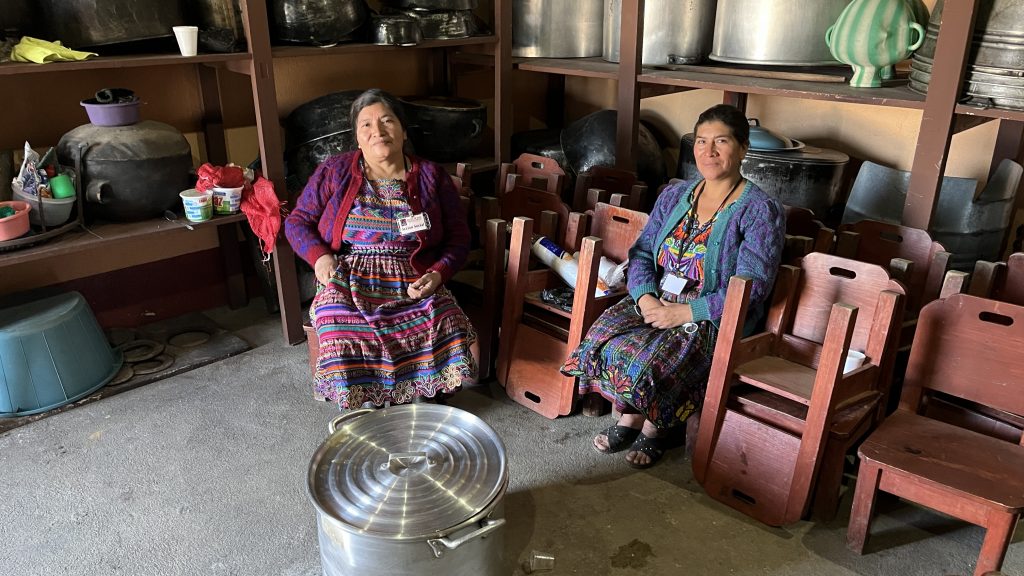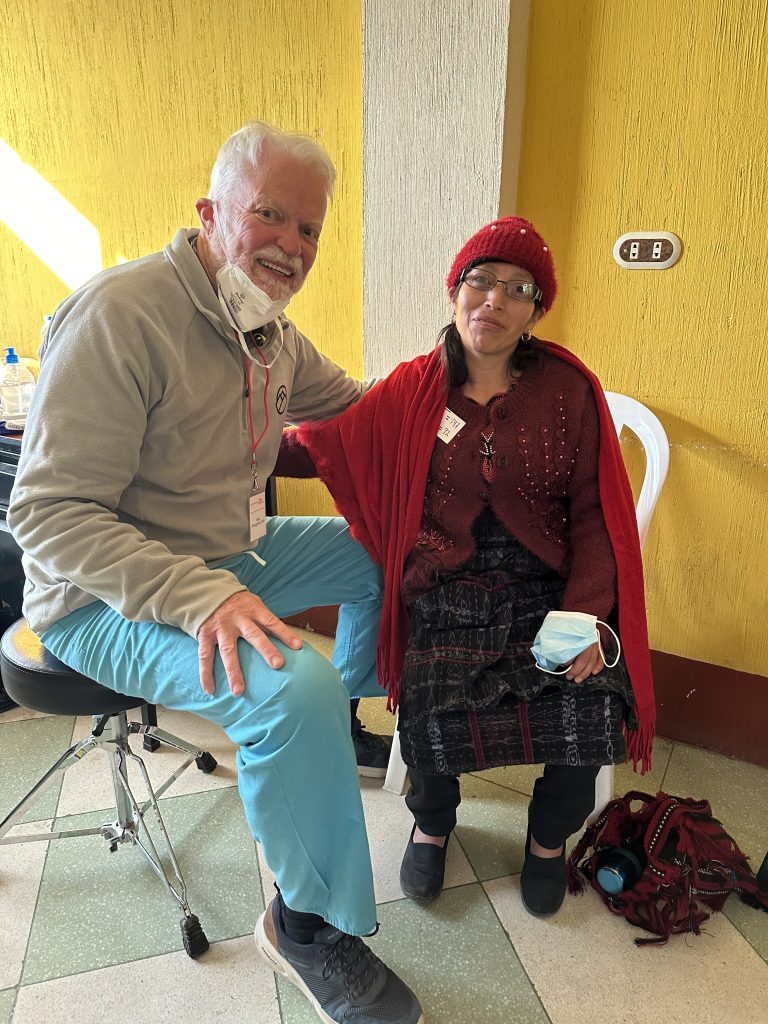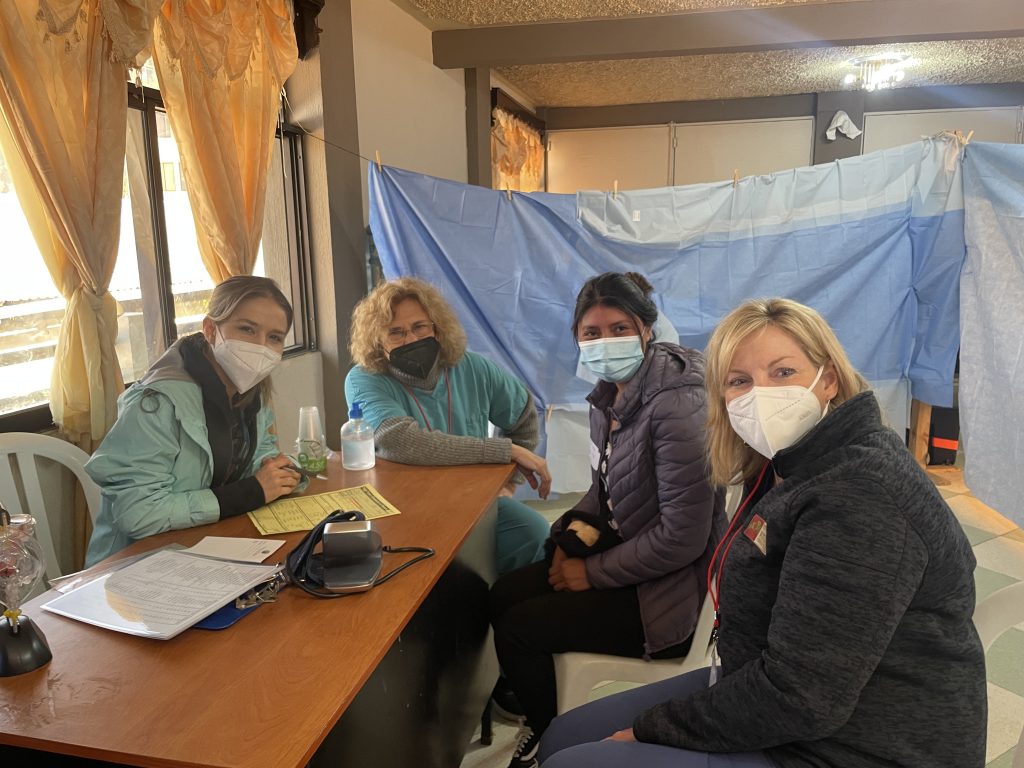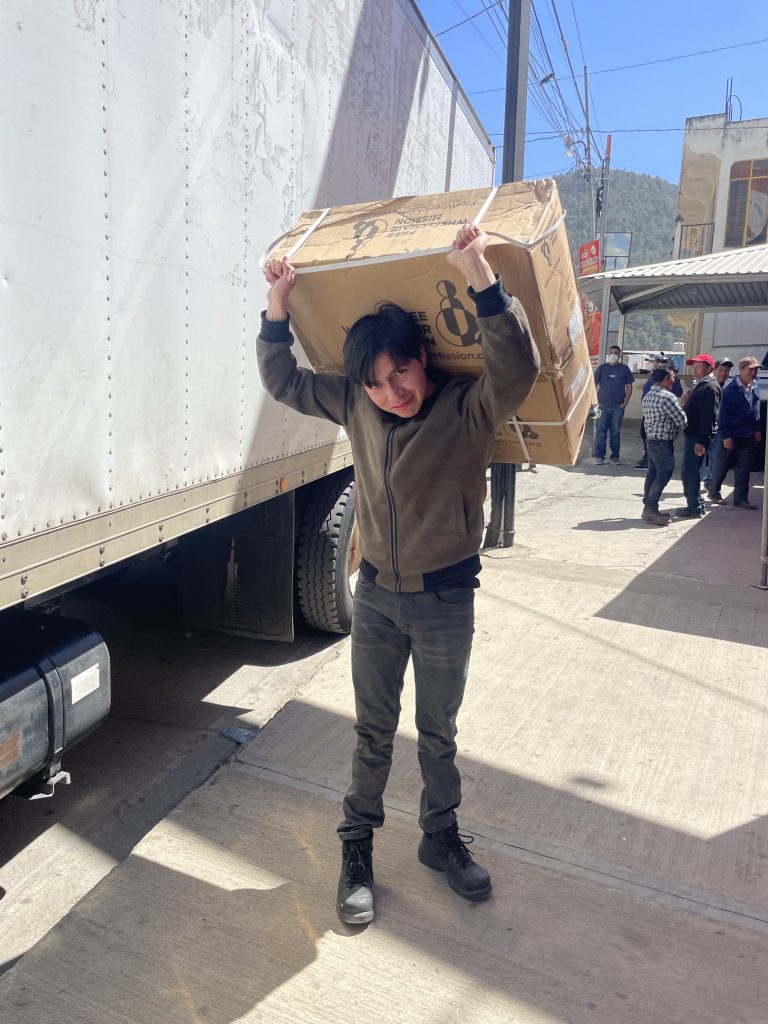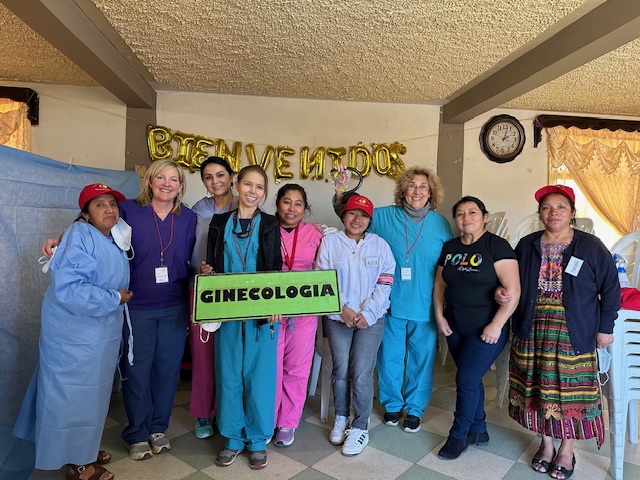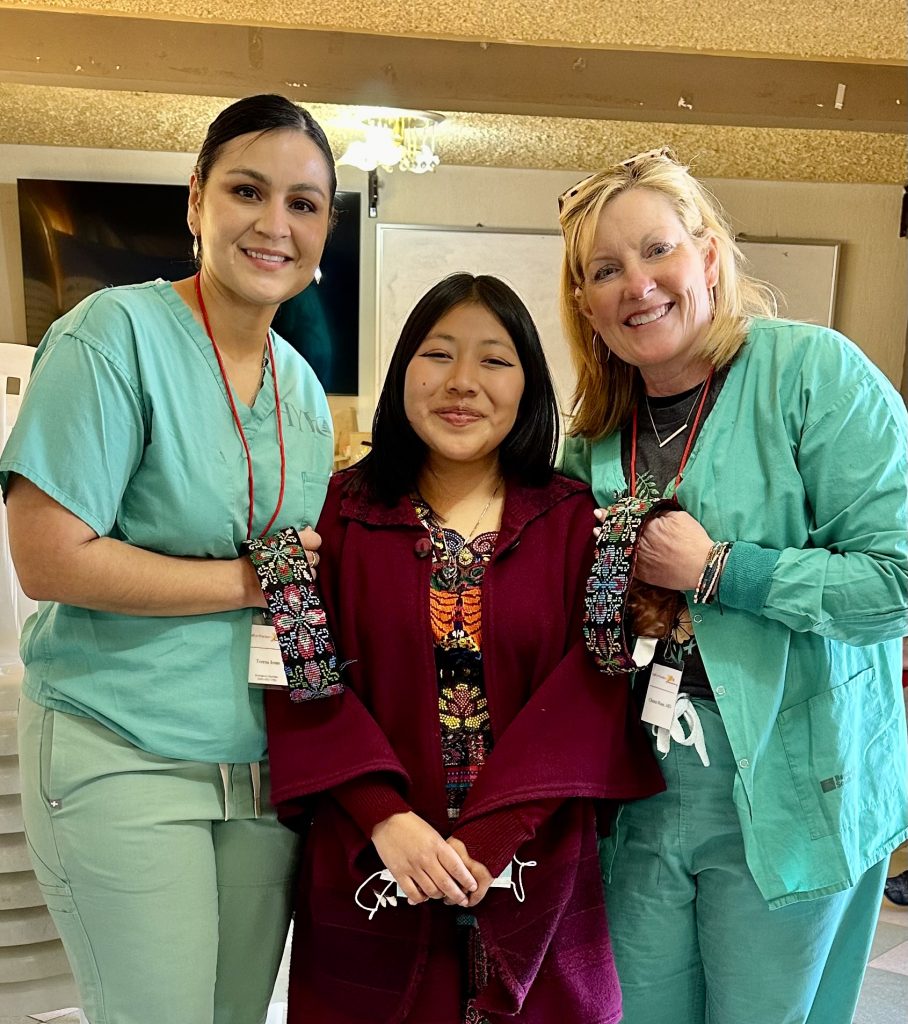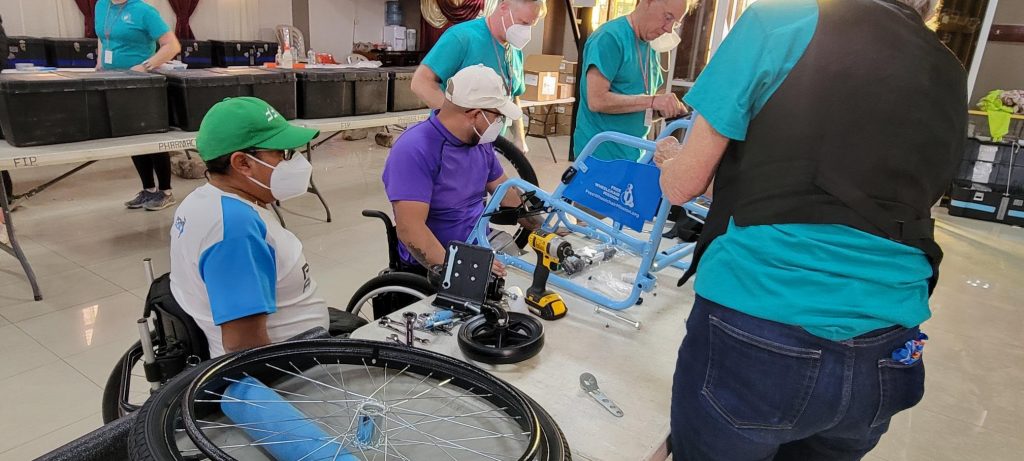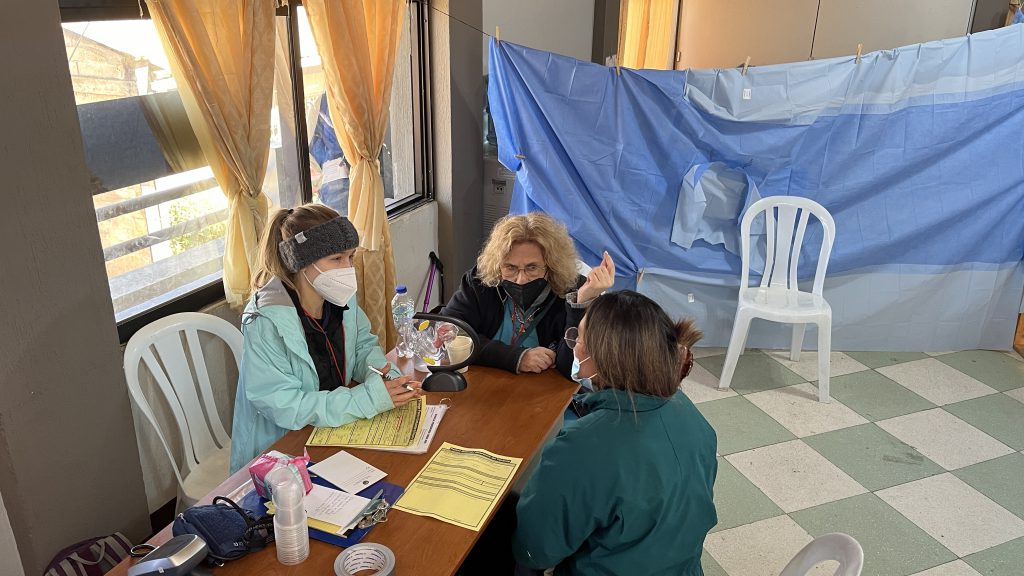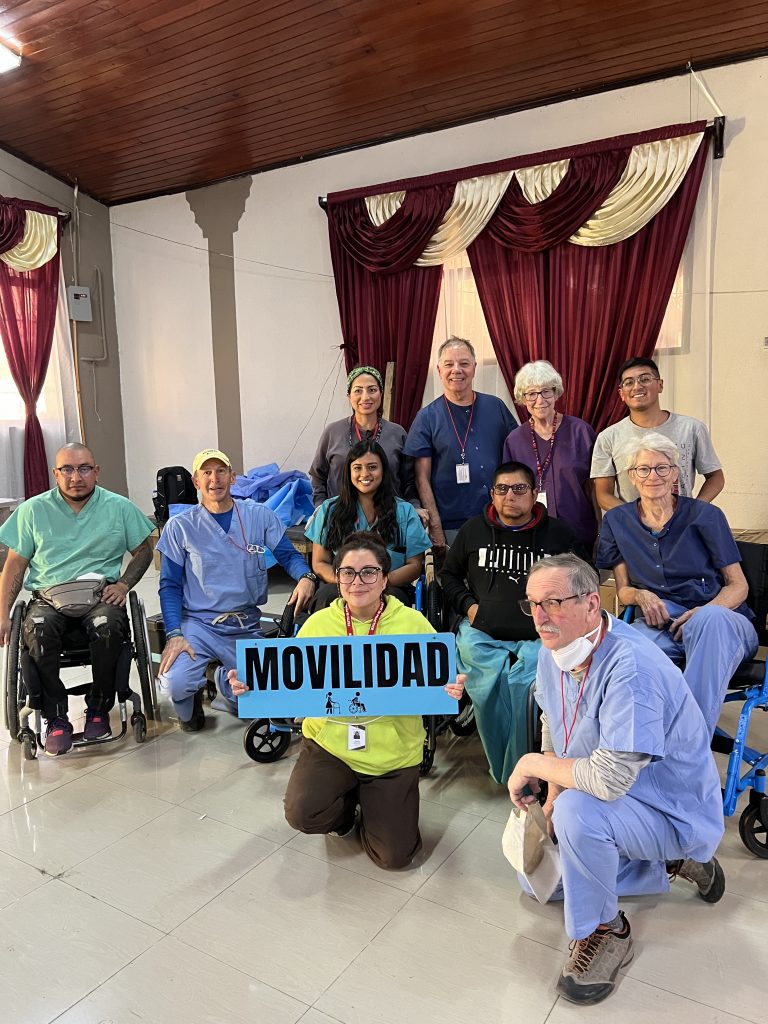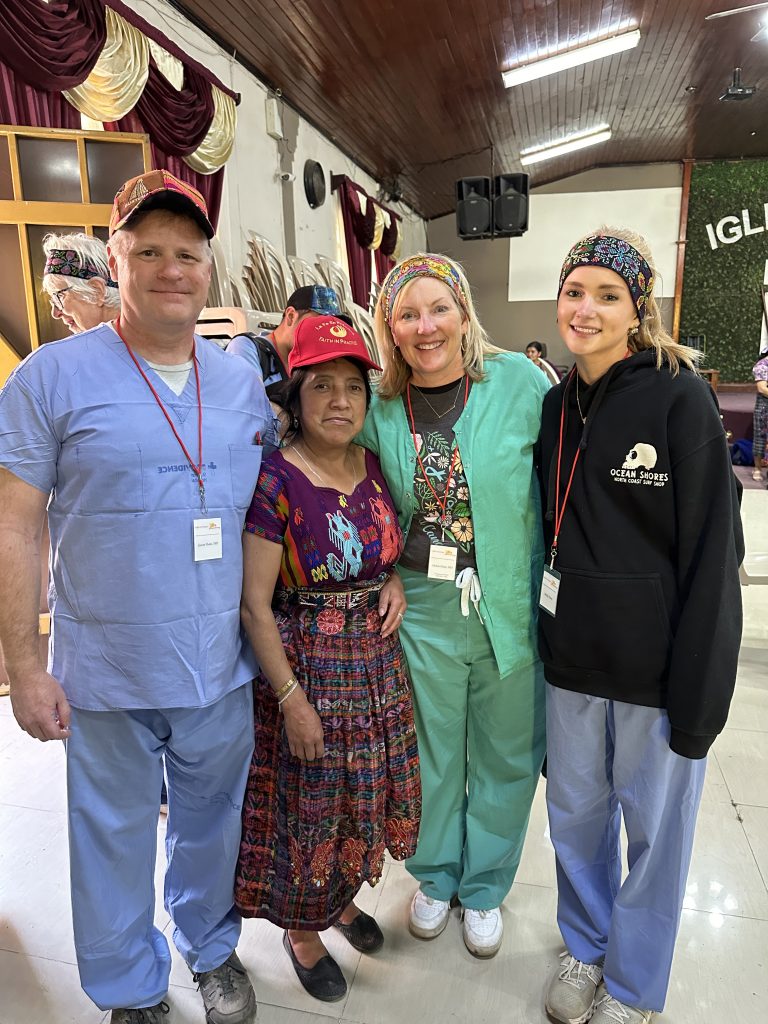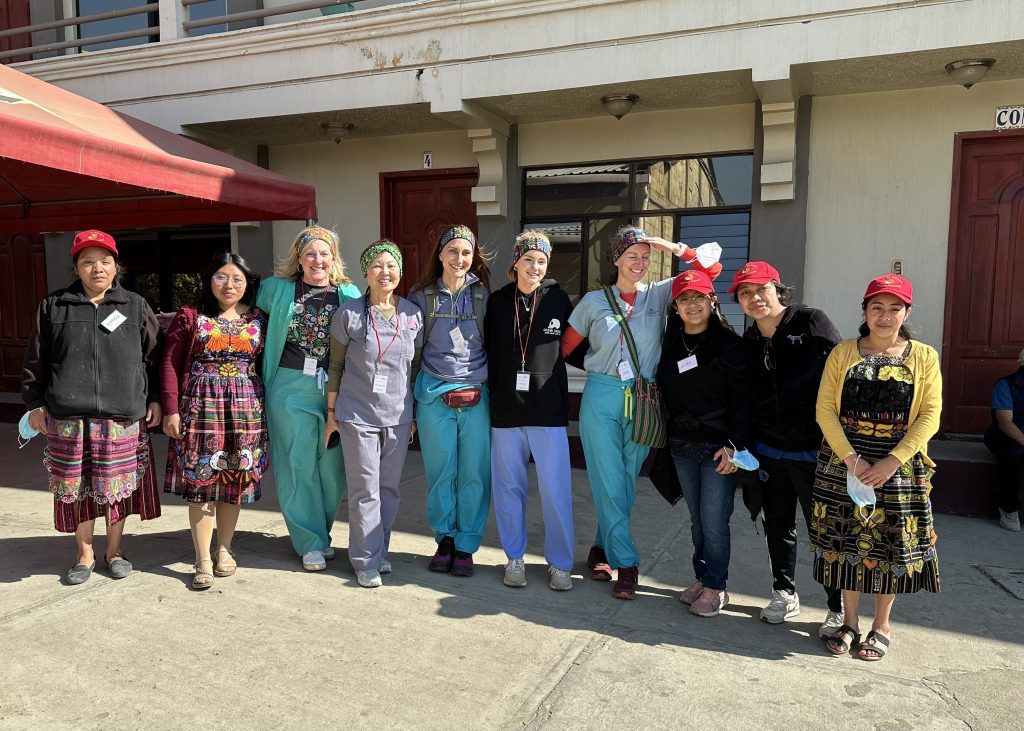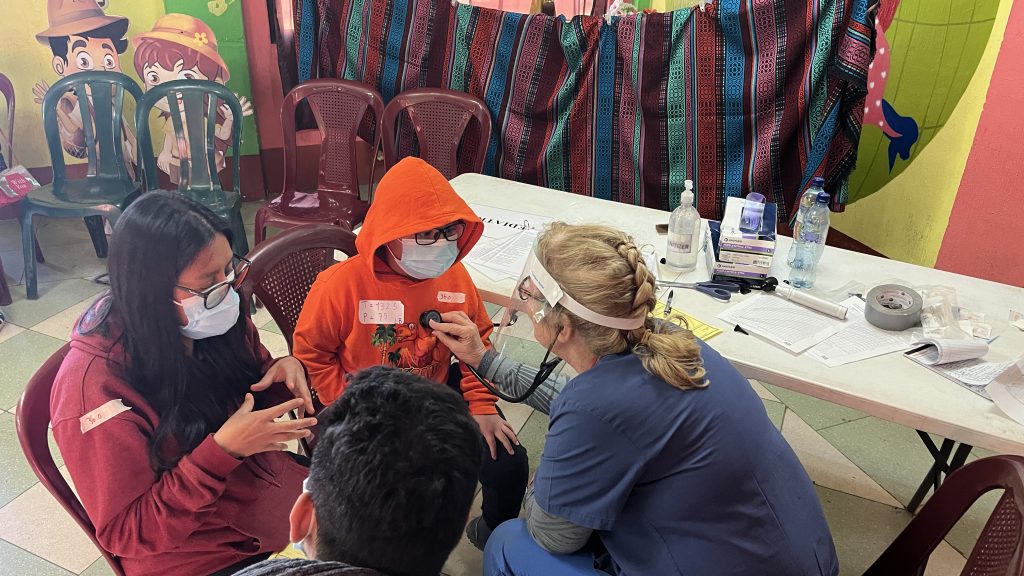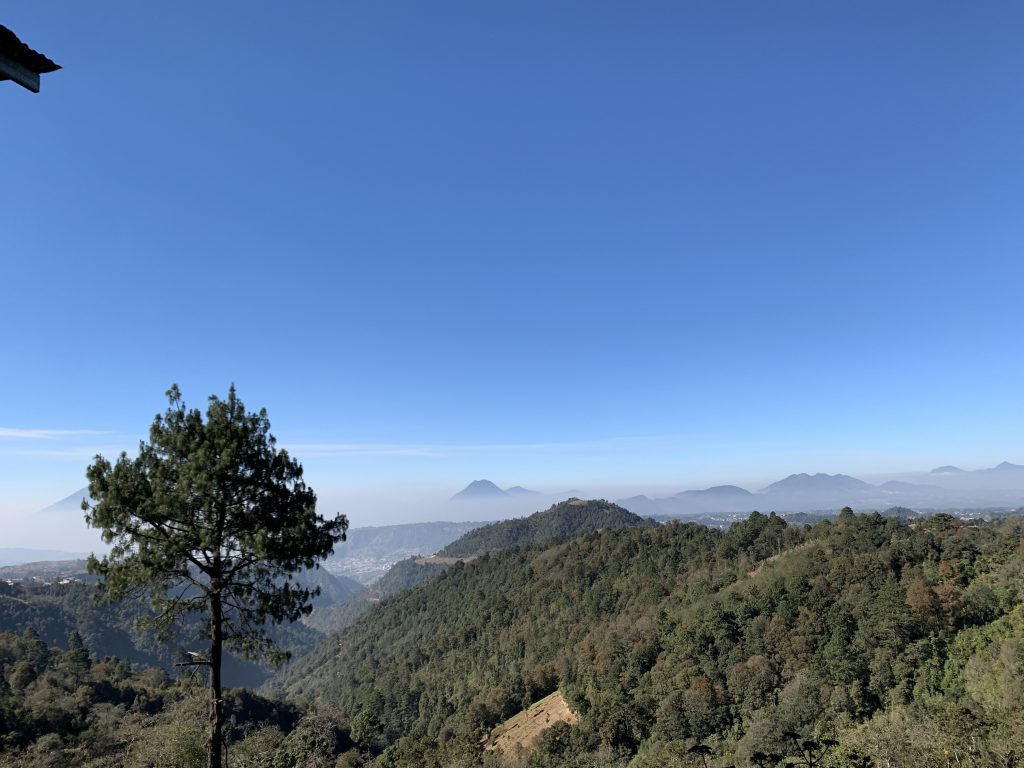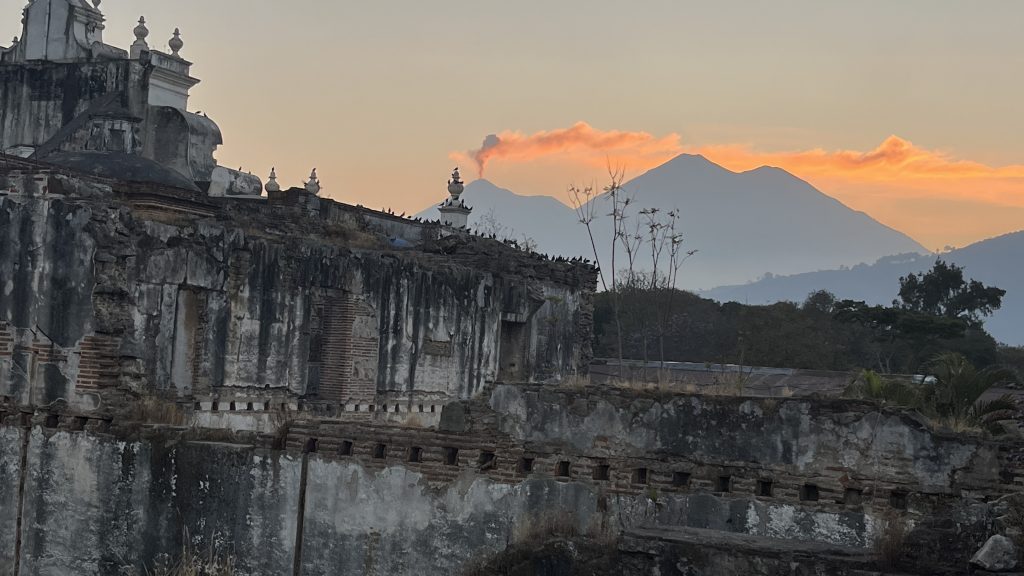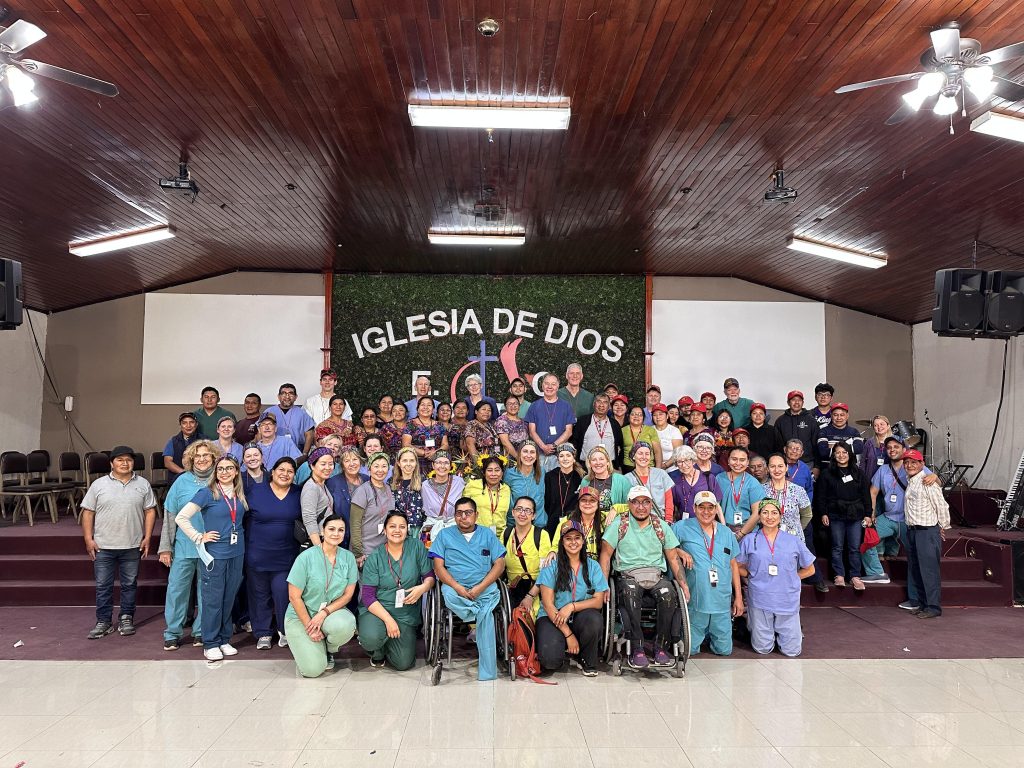–Joel Zimbelman and team members
Last Friday the Delk 791 Village clinic wrapped up its work, held its farewell awards dinner, and prepared for our morning flights back to the States. By the time you read this we will all be redeposited our respective lives and roles; family members glad to have us home; and the daily routine of life starting to make many of us believe that the week in Guatemala was just a dream. Eight new health care providers from the States (who you will meet shortly) joined the Delk team this year, so those and many other friendships with the local Faith in Practice staff will keep all of us going on an emotional high this year.
Together, the eighty team members from the US and Guatemala have put together a short blog of our week. Pictures and observations give you a sense of what kept us busy, exhausted, energized—and truly blessed—as we addressed the needs of our 712 patients. We hope these resources will move you to keep up your varied support of our work and urge you to consider joining a FIP team in the future.
Day 1: Saturday: Arrival
Until 1 p.m. today, Delk 791 just exists as a concept, its members scattered across Guatemala City, Antigua, on planes coming into the country, and with many still in the villages that they call home. But suddenly, La Aurora airport is buzzing. You can see the US contingent of “blue shirts” grappling with luggage and customs and sputtering in their broken Spanish as they spill out of the planes. Our local ground team leaders (who we always listen to without question)–Julia and MariCarmen–appear out of nowhere. Hugs among old friends and introductions to new ones ensue, and the team has suddenly become a reality. It’s a strange feeling, even after three trips for me. But the esprit de corps, the expressions of commitment to our work as well as anticipation of adventures and challenges has everyone on a high. We load up our small bus and head to Antigua–our base camp and the old colonial capital and a jewel of Baroque architecture–in preparation for clinic in the mountains. Hotel check-in, orientation to our surroundings and team expectations, and the first of many fabulous dinners follow before we all hit the sack early.
Day 2: Sunday: Travel and clinic set-up
Our clinic work will be northwest of Lake Atitlan and East of Quetzaltenango in the sleepy village suburb of Paxtoca. A long three-hour drive west of Antigua, skirting Lake Atitlan to the south, gets us to our destination perched at 7600 feet. We are in very comfortable long-haul busses with great security protection all the way! Our first stop is the Church of God which has graciously opened its full facility to us this week. The sanctuary becomes our Pharmacy, Mobility Clinic/Physical Medicine and Rehab, and Medical Referral. General Medicine, Woman’s Clinic/VIA Thermo, Peds, Radiology (Sonography), and ENT each get their own spaces in Sunday school rooms (medical equipment mixed all week amongst tables, chairs, and the artwork of the church’s kids). Patient, intake, triage, the waiting area, wheelchair construction, the lab (the busiest table I saw all week!) kitchen, and mess hall take over the courtyard and the back of the large complex. In addition to giving us this great space, we get a rousing welcome from the church’s leadership team, and receive their generous gift of about twenty volunteers to help out with various maintenance and logistics issues during the week.
The first task before us is to unload two large trucks of equipment for the week: sonogram, 100 wheelchairs, a dozen tables, computers and medical forms for referrals and patient tracking, exam tables, drapes for examination rooms, all medicines and the pharmacy supplies (seems like a dozen or more big boxes), food for five days of lunches, and all of the gloves, swabs, masks, drapes, and 120 pairs of scrubs that we will work in for the week. Its humbling to realize that absolutely none of our very noble intentions in coming to Guatemala would amount to anything if it weren’t for the dedication, smart organization, and often back-breaking labor of the folks on the ground who partner with us. With 28 village clinics, 32 surgical teams, and 28 dedicated mobility clinics every year, the effort to get us set up in a village and immediately functioning on Monday morning at 8 a.m. is amazing. As much as helping patients, being part of such a team of folks from different countries and cultures–who often struggle with expressing ourselves to each other–is what generates our appreciation of this undertaking.
Faith in Practice uses our individual registration fee (that we each pay for) to provide us with a very nice hotel in Quetzaltenango, about 30 minutes from our clinic. The best part of the rooms? Consistent hot water, especially appreciated on those frigid mornings at this altitude. Managing the flow of patients using our single yellow medical record and referral sheet requires everyone to know how to pass patients on to the proper clinics. So our hour-long orientation meeting drifts into dinner, and we’re off to bed for the next day’s work.
Day 3: Monday: Opening clinic
All of our days start the same: Up around five and a short devotional with the whole team at six. Breakfasts are always wonderful, including local foods and some tried-and-true staples from home. We have to be in the bus at 7:15 a.m. and, upon arrival, we mask up and head past the lines of patients that have formed on to our clinics. The frist patients have already been processed into the courtyard, and so triage hits their stride immediately. We will have around 175 patients a day coming through our clinic in groups at 8 am., 10 a.m., and 1 p.m. Many, many of these folks will be visiting multiple clinics for a plethora of ailments and needs, so actual clinical contacts will be many times higher than our patient count—by Thursday we will have seen 719 patients, but will have had 1782 discreet clinic contacts! The key to success at this point is focusing on one’s tasks. St. Paul’s admonition to remember that you are just a part of one body and that each part has a needed task rings true here is a very concrete way. The day is filled with listening and translating patient input, moving patients to the most important providers for examination of their most pressing needs, consulting across clinics as need be, giving each patient the best possible care and full attention we can muster, staying hydrated, embracing continuous masking and hand washing, taking short breaks as we are able, and grabbing a picture or two to capture the blessings of our work.
Phil is new to the team this year and worked as a physician in the mobility clinic in physical medicine and rehab (that’s him in the picture with Joanne, his wife and our new pediatrician): “I’m a first-timer with FIP and the best way that I can sum this up is ‘Fantastico!’ From the doctors to the support staff to the volunteer ‘red hats,’ everyone is expert and energized. The patient flow is excellent in real time and there is tremendous prior organization and follow-up. The collaboration with other team members is so satisfying. So many interesting clinical presentations and being able to use my skills to help. The people have such need and are so, so thankful. I can’t imagine participating with any other mission group because the standard of FIP is so high.”–Dr Phil/Filipe, Rehab. Medicine, La Clinica Movilidad
Jason Hunt came for the first time this year as well. An ER physician in the States, he finally took the prodding of his wife Christs to heart: She’s been coming for years as our women’s health clinic point person. We had heard rumors that she was married, but this confirmed it! And Jason took the opportunity when things would quiet down in the General Medical clinic for a few minutes to join us building wheelchairs.
Evenings are mostly about relaxing for an hour before dinner, and then turning in early. Staying in touch with family and friends back home is not as challenging as it used to be: Good cell service and wi-fi means that we can stay updated on what is going on. The national news at home: We found we could do without that. But updates on family left behind, grandkids, and pressing issues that we can’t drop just because we come to Guatemala kept us tied up until bedtime.
Day 4: Tuesday: Clinic
The first day seems like a blur: It was busy and we needed to get into our routine, clarify patient referrals and a few other small issues. But as with all of our days, all patients were seen by about 4:30 p.m. Today will be a bit slower in terms of patient numbers (the only such day we will have), but that doesn’t mean much to some of the clinics: On any given day one clinic can have a moderate number of patients, but pharmacy, referrals, General Medicine, Woman’s Clinic, and Mobility were always busy, and the volunteers in those clinics seem to have a lot less time to rest or even get lunch. But our kitchen staff makes sure we all get snacks, special beverages (morning Guatemalan hot chocolate), filling lunches, piles of guacamole, and plenty of water, tea, coffee, and refrescos. On some days we move volunteers around to help out in busy places, but the sense of satisfaction in seeing the last patient come through the door is shared by all of us—clinicians and local volunteers alike.
Julia is our local point person on the team. She modestly calls herself a Medical Clinics Program Assistant but is really our platoon sergeant. That’s her in the picture with her arm on the shoulder of a red hat. She received a moving and unforgettable gift today. Mid-afternoon I noticed a clutch of a dozen young kids sitting in the waiting area with pretty impressive toys. Turns out they were a young group of kids from a nearby orphanage that is dedicated to taking in special needs kids who are abandoned on the streets—they were a handful of the half million orphans in the country, victims of poverty, violence, and lack of medical care or social support. Julia, now full-time with Faith in Practice, got her start a decade ago in caregiving work with that orphanage—its what cemented her commitment to this sort of work. Their appearance was a total surprise to her (and us), and she was able to connect with some of their caregivers and received good news on some of the kids she had worked with those many years ago. The whole group descended on our wheelchair assembly area for lunch after their exams were over, so we abandoned the space to them for their celebration of a day out in the community and a picnic. I have never seen Julia more happy with our work than when they headed out the door to go home.
Monica joined us this year as a pharmacist—her first FIP trip. That’s her in the Cotopaxi puffer: “I came to Guatemala with Faith in Practice because I knew I wanted to serve others in a way that would take me out of my comfort zone and my routines. I wanted to experience the gift of humanity in a way I hadn’t before. I am so grateful for the love and warmth that the people of Guatemala showed us while we were in Totonicapán, and their passion for their community and their culture will forever be an inspiration to myself and others.” –Monica Morgan, DPharm, Pharmacy.
And with two new folks in our Pediatric clinic, we got a real bolus of energy and expertise. Jean (in a picture with a patient and his mom) notes that “one of my favorite aspects of the week was the partnership between the local Guatemalan community and us. I was impressed with Faith in Practice’s organization and punctuality. I loved Julia’s leadership and empowerment: ‘If you want coffee in the morning, you need to come 15 min early because we start on time.’ Showed us who was the jefe! I also appreciated that the local staff had already gone out in the community to select the most appropriate patients for us. All we had to do was show up. I am grateful for the opportunity to serve this week in Guatemala with this group. I hope we planted tiny seeds and that God continues to grow them for His Kingdom.” — Jean Hsu, MD, Pediatrics
The interpreters seemed to be the most in demand people at some points of the day—I would occasionally get the sense that there was no rest for these folks. Molly, Octavio, Eunice, Kip, Victor, and a host of other interpreters in different clinics always seemed to be in deep three-way conversation with patients and clinicians.
Day 5: Wednesday: Clinic
What a mix of cases today! In a couple cases patients appear with serious challenges that might suggest a needed hospitalization. In many other cases, the best treatment will be referral to another clinic or to one of FIP’s surgical teams (we bumped into two surgical teams over the course of our week in Guatemala that were working concurrently in Antigua—we’re never the only game in town) that can get these patients the help they need. One young girl (the mauve dress gives her away) came with her mom this morning complaining of a lump in her groin that she noticed after a fall. After a couple consultations, lab work, and a visit to Phebe’s radiology clinic, it was apparent that she had a tumor of some sort, and in need of biopsy and removal. The referral office has her lined up in short order for the procedure. In two other cases, patients were coming with families for more basic help: An uncle appeared with his nephew who was now his legal ward. The young man suffered from fetal alcohol syndrome, his mother had just died, and his dad was totally out of the picture. His uncle (now is functional dad) simply wanted a check-up of the boy and advice on next steps for care. A mom appeared with her daughter asking for a second opinion on the need for a surgical intervention. Diabetes, hypertension, respiratory problems, gastritis vs. gall bladder complications, prostate problems, wound care and requests for mobility devices and wheelchairs by young amputees from motorcycle accidents and aging patients were common presenting problems all day. One wheelchair went to a special little guy whose mother had been carrying him around for six years. A changed life for both of them.
Lou joined me in the mobility clinic for the first time this year—he’s working on a Gen 3 chair in the picture: “One always takes away something, consciously or unconsciously. It has been good to see a community of culture and self-reliance be so happy to welcome and receive the attention and care of the FIP care team” –Lou Hoebel, Mobility Clinic
And Mark Montgomery gave us our first ENT clinic and saw as many patients as anyone. In fact, he was so tied up in that upstairs lair with the microscope and other equipment that at times we nearly forgot who he was, until is smile broke out behind the mask!
What a diverse patient population we saw this week! Lots of folks from the local community who have settled into urban life and work in the community or in Quetzaltenango close by (a few of our volunteers were from there as well). But there were many patients from villages in the outlying areas. We’re in the highlands here, and the beautiful traditional fabrics worn by many of the women–both young and old—tell a story of traditional ways and lives lived in small communities bereft of lots of the conveniences and comforts of the modern world. True, there were lots of smartphones in continuous use by people in all of these communities (and I think they requested as many pictures of us as we did of them). At the same time, the pervasive lack of financial security and transportation, inadequate diets, lives lived without medicines or regular clinic contact, and recurring chronic illness and tragedy etched on many faces meant that we were seeing those folks who for the most part have no other alternative for health care beyond this week’s visit.
Day 6: Thursday: Last clinic and packing up
We move quickly into the last day of clinic: This a race against the clock: we need to see the full complement of patients, at the end of the day pack up the whole clinic and reload it into our trucks; attend the closing blessing ceremony offered by our hosts; get to the hotel for this evening’s award ceremony and celebration; turn in our scrubs, and then pack to leave town in the morning at 7:30. As the day begins, most of us have a sense of “shock and awe:” Shock at the challenges we will all encounter in the next seven hours (day four is always a stretch out here); but awe at how fast the time went and how many folks we were able to meet and help.
Our day comes to a close around 3 p.m. The packing only takes a brisk hour with about fifty people helping to load the trucks. Most of the heavy wheelchairs and supplies of medicine are gone; but everything else will be repackaged and resupplied for the upcoming village trip this weekend. We receive a heartfelt thank you from all the volunteers and our church hosts, replete with gifts of beautiful hair bandanas and baseball hats (all with traditionally woven Guatemalan fabric). Saying good-bye to our volunteers and for all of us some new-found friends (mine was Wesley, a red hat volunteer from Guatemala City who is studying to be an engineer but likes to be part of this activity for the patient contact) we head out of the dusty parking lot with a pack of friendly local dogs wagging their tails.
In addition to Jason Hunt, the youngest member of our US-side team was another Hunt from North Carolina, Molly. She’ll be graduating from high school this year, and decided to cut classes for a few days with her parents, much to her counsellor’s and principal’s chagrin (“what could a young person learn in a week of medical translating work for eight hours a day that they couldn’t get sitting in afternoon study hall periods back home?”). She’s the one with the longest hair in the pictures, and I definitely think her Spanish—and our understanding of patient complaints—improved with her hard work at the triage table and in general medicine. I know she will pick the right college next year from all her choices, and end up at Berkeley!
Joanne Reid was the second half of our pediatric team, and a newbie with FIP: “I would say that both Phil and I had low expectations for this trip. I thought I was going as a pediatrician and would see if I could make a difference for a few children. Phil thought he would be assembling wheelchairs. From the moment the team gathered at the GC airport, I could feel an energy! At first, I was a bit envious that everyone knew each other and had gone on a prior Delk Team trips together, but we were quickly brought into the fold. Upon meeting ‘The Team on the Ground’, we were impressed! The scope of organization to get this mission trip off the ground was phenomenal! When we arrived at the village, we were immediately aware of our importance to this community. The most striking feature was the appreciative response from our patients. The experience was a bit humbling, wishing we could do more and acknowledging that we did help a few people. We plan to come back next year, now more aware of the need and to be more involved in the intricacies of being able to provide optimum care with the services available. And thank you to our whole team for inspiring us! We took the leap of faith and got more than we gave.” –Joanne Reid, MD, Pediatrics
Today is probably not the best day to ask the question “so, will you be back again next year?” But of course, that is a question we will all have to answer in the coming months, and it’s amazing how many affirmative “yes, I will be back” statements you will eventually hear.
So, what’s my personal takeaway from this clinic experience? It’s an honor to serve these folks and to provide some of the necessities of life that we take for granted back home. A first visit to a doctor in ten years for some; a valuable second opinion for care; a referral for surgery; a follow-up biopsy; a wheelchair for a motorcycle accident victim who will never walk again. You start to realize that, with few other medical options available, contact with our clinic and caregivers is truly a lifeline and empowering gift.
The other side of my head says it’s an outrage that we have to be here: After thirty years of diligent service in the country, we still see in every clinical encounter an overwhelming unmet primary health care need for most of the folks outside of the larger cities (and many in those cities as well). Various sorts of government and free-standing clinics and pharmacies exist out here and elsewhere, but many are short staffed with little supporting equipment, infrastructure, health care providers, or referral network. The best care is really guaranteed only by one’s ability to pay; and pharmacies sell needed medicine—but at prices only a fraction of people can afford. Sure, similar challenges exist in other countries including the States, but poverty and inaccessibility it is grimly pervasive here. This means that we’ll take the long view and return as needed; support Faith In Practice’s impressive ten year plan for growth and expansion; pin our hopes on a restructuring of the delivery of government rural health care under the new president; and hope that economic growth and a commitment to adequate access to health care for all of Guatemala’s citizens can find some way of growing together.
Day 7: Friday: Travel back to Antigua
7:30 departure and we are off to our base camp in Antigua. The three-hour return drive takes us though the mountains on a nice divided highway with stops on the way for some pictures and refrescos. A free afternoon of wandering around Antigua and for some visiting an organic farm, doing laps in a hotel pool, visiting the weaving museum, or picking up some mementos at the artisan market closes out day. Many of us meet together for one last dinner, and a chance to have a moving and informative conversation with Ivonne Anzueto, President of the Faith in Practice Association. She’s a board member down here, and it was wonderful to observe her commitment and astute observations of FIP’s challenges and the opportunities it has to grow and flourish. Another sign that clinic work can’t function without individuals working at all levels of society!
Regrets? The one I heard the most from folks was that they didn’t budget more time in at the front end of the trip to do an immersion language course for a week in Antigua; or that they failed to add a few days on the back end to get down to Lake Atitlan or up to Tikal. But, since so many will (hopefully) be returning in future years, this will give everyone a chance to atone for and correct their errors in judgment and failure to seize the day!
Day 8: Saturday: Home (for most of us)
Departure time comes for many at 3 a.m. as we grab coffee or a small breakfast and load into one of the three shuttles running us back into Guatemala. Little time this morning to say our good-byes and last words to each other. Thankfully staying in touch is a lot easier today than it used to be—you just need to take the time out of busy schedules to connect. By the time Sunday morning hits, most of us will be stateside and home. Local folks will have returned to their homes for a rest; translators and team members will get a short break before many return for another village assignment in a week. We all missed things from the States while we were here, but there will be lots we will all pine for from Guatemala in the coming months—not the least our friendships and satisfying work.
Special thanks to Christopher and Bethany for being the glue of the team. One doesn’t want to ascribe too much weight to individual leadership and “great man/great woman” theories of history, but it’s pretty apparent to all of us that their continued presence over seventeen trips is what brings out the best in this team. So if there is one prayer everyone on this team can share it is that “may the Lord bless you two and keep you, may the Lord’s mercy shine down on you and be gracious to you, may His countenance cover you in grace, and for God’s sake please keep these people healthy and motivated so that we have a string of additional good years like this last one!”
Phebe, our radiologist, just sent this out, and it seems a fitting way to end our trip. “Hi friends, Some of you asked for the lyrics to our team song so I am forwarding it here along with the recording. I had an amazing trip and it was wonderful to see old friends and meet new ones. Hope everyone is well and safely home. For those still on an adventure, hope it was awesome! Phebe”
It’s faith that guides our journey
And it’s hope that leads the way
It’s a joy that lifts our spirit
as we go this day
We’ll see the smiles of gentle people
and the trust of humble hearts
There will be selfless kindness and love will do its part
Help us put our faith in practice
Give us strength to do God’s will
Guide our helping hands
so lives can be fulfilled
We’ll have angels on our shoulders
and compassion in each heart
Grace and understanding will join us at the start
Help us put our faith in practice
Give us strength to do our best
Guide our helping hands
so God can do the rest
To listen to the song, visit: https://youtu.be/jO-zheQMx6c
–Attribution, year


